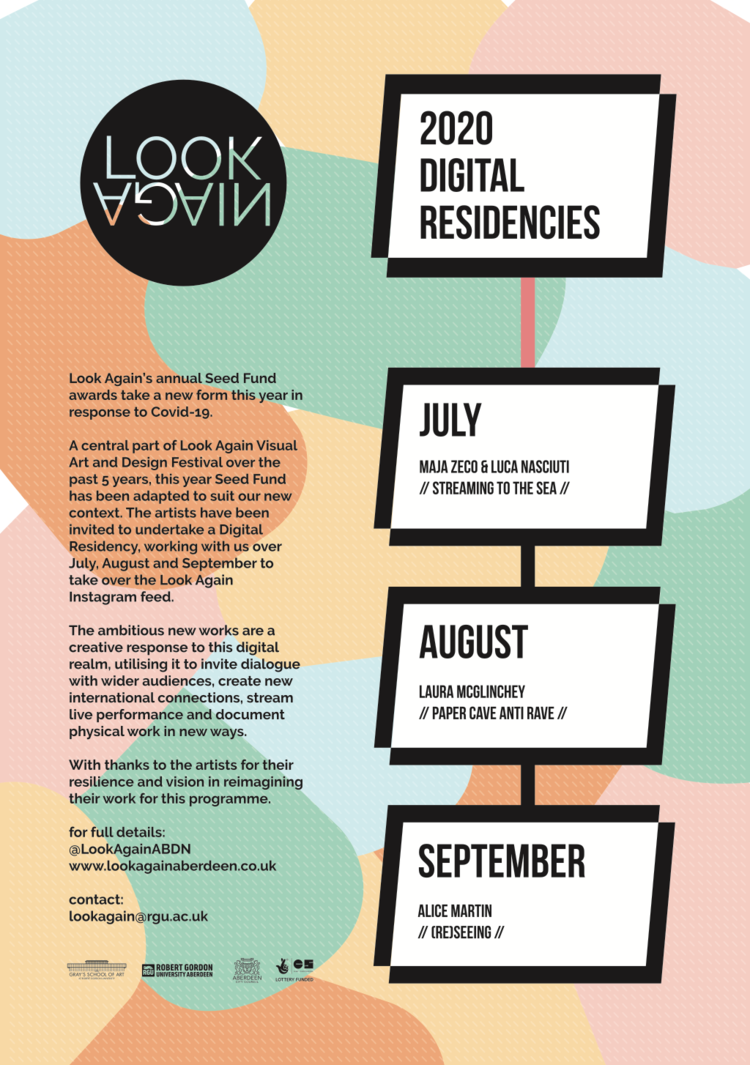

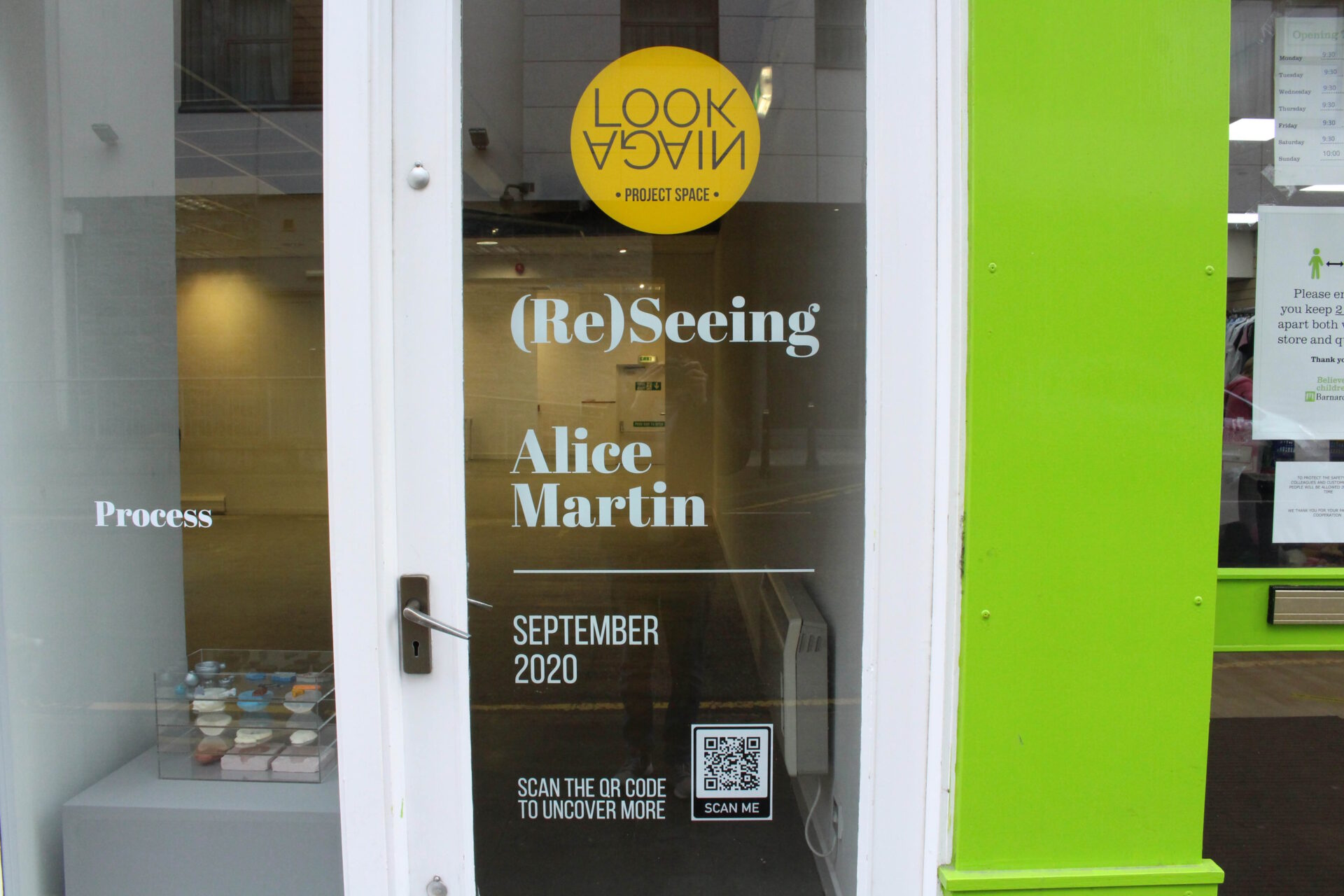

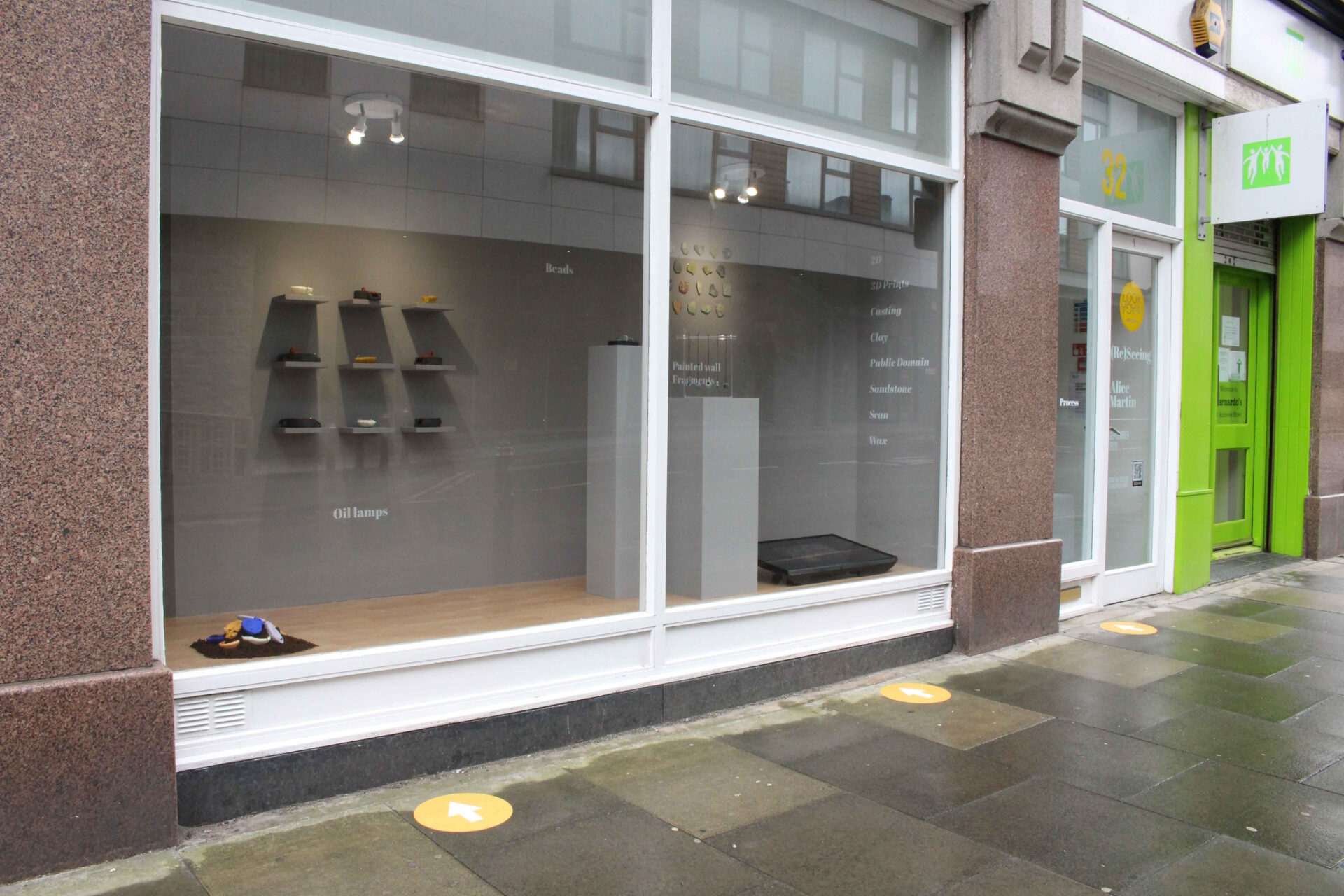

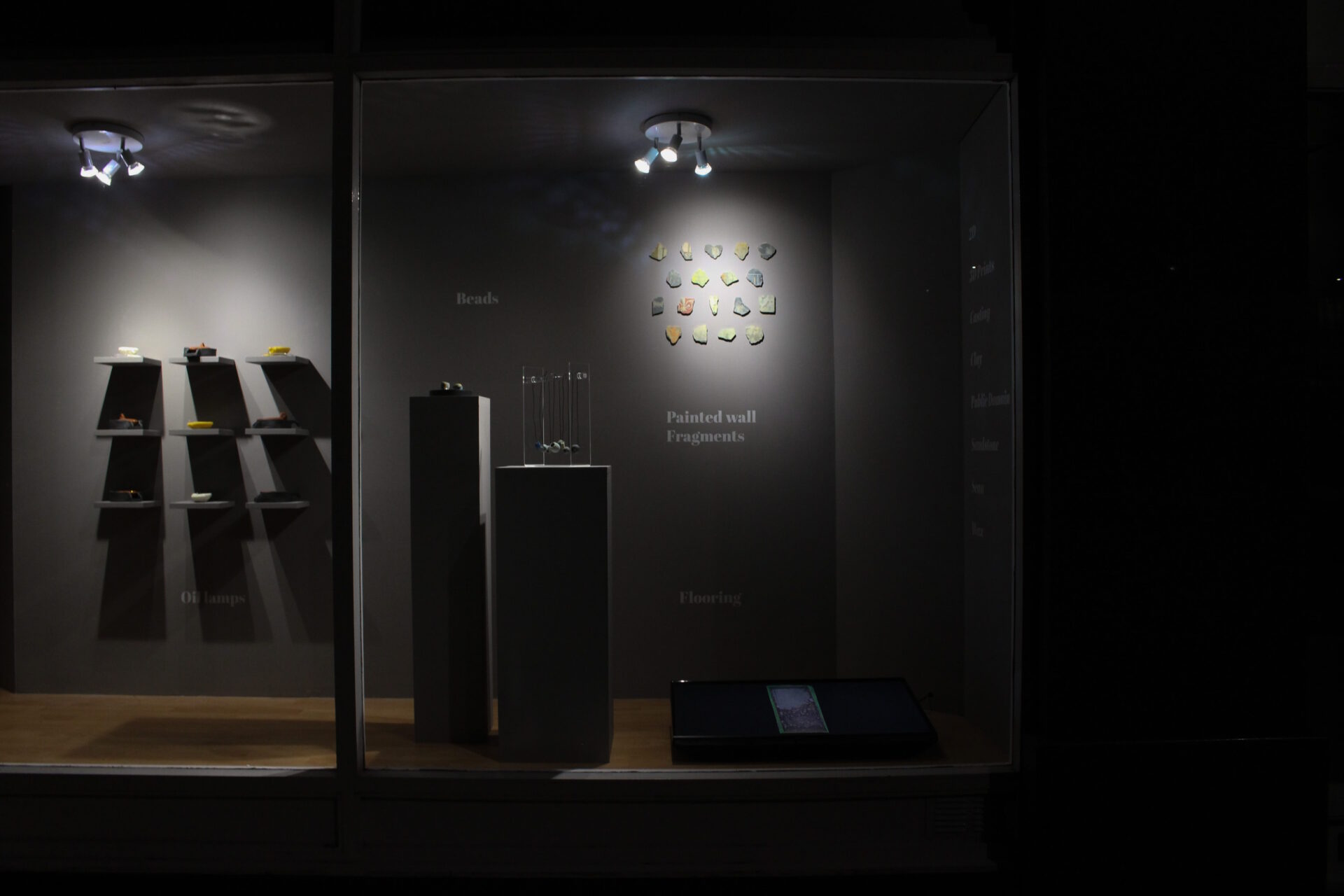
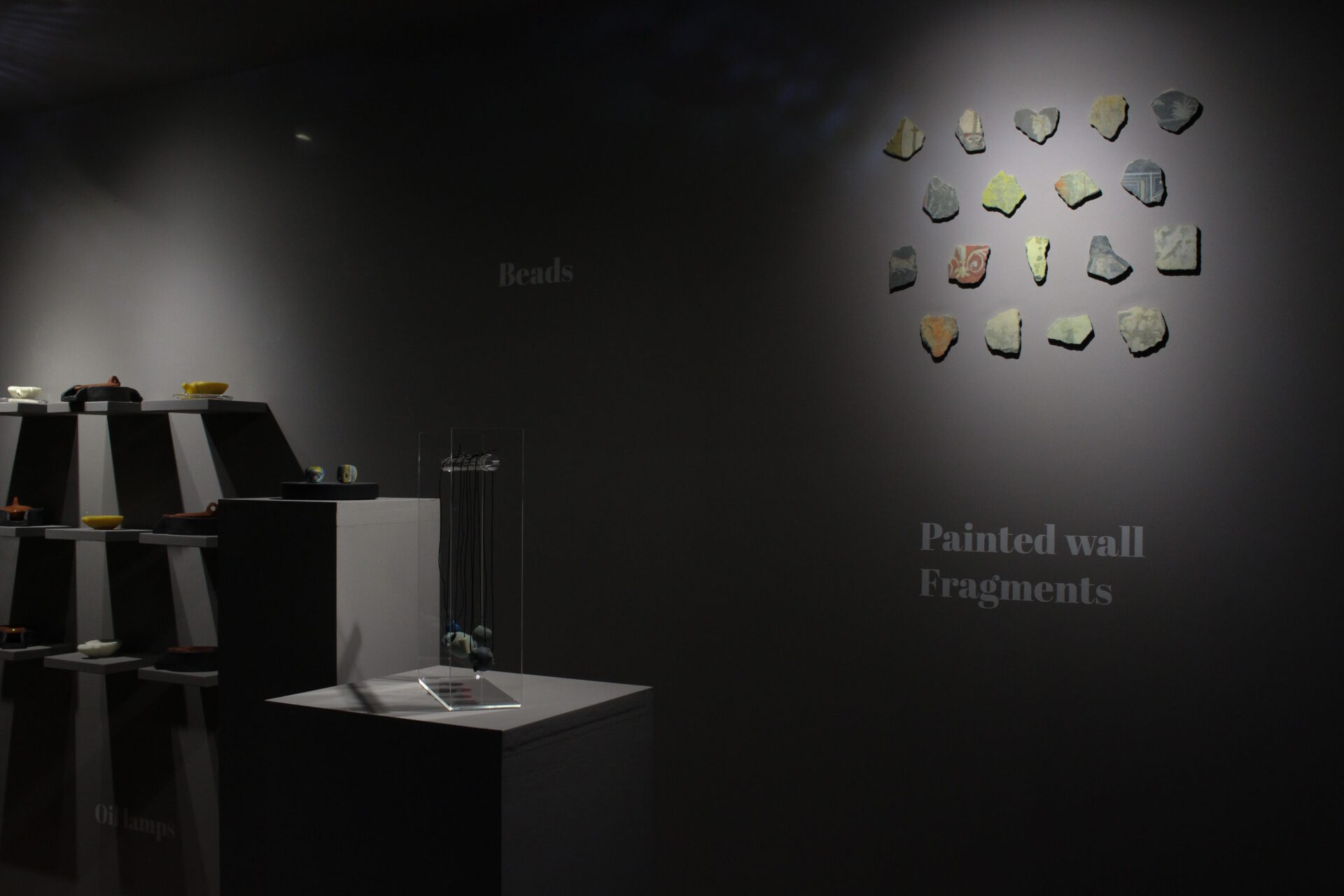

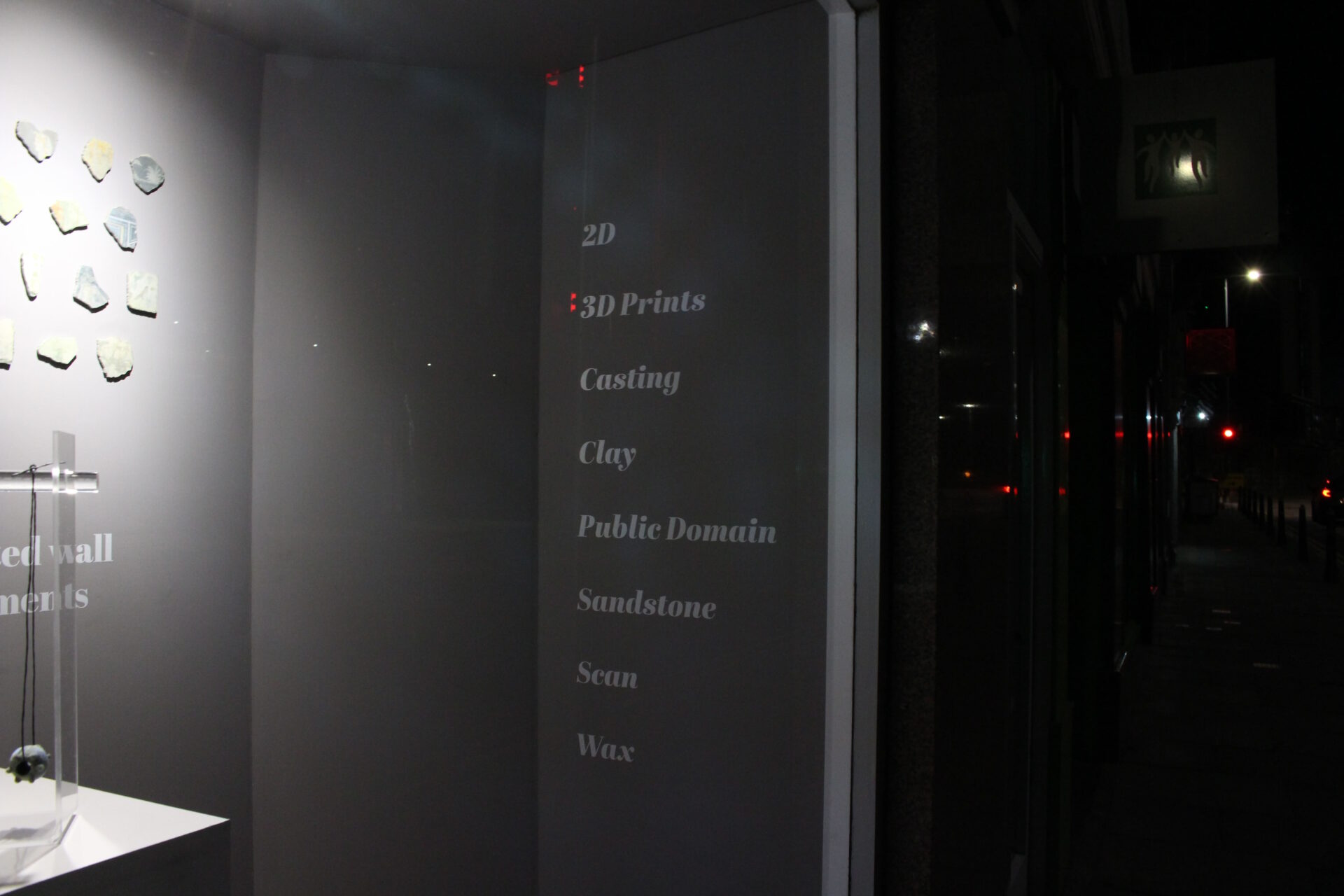
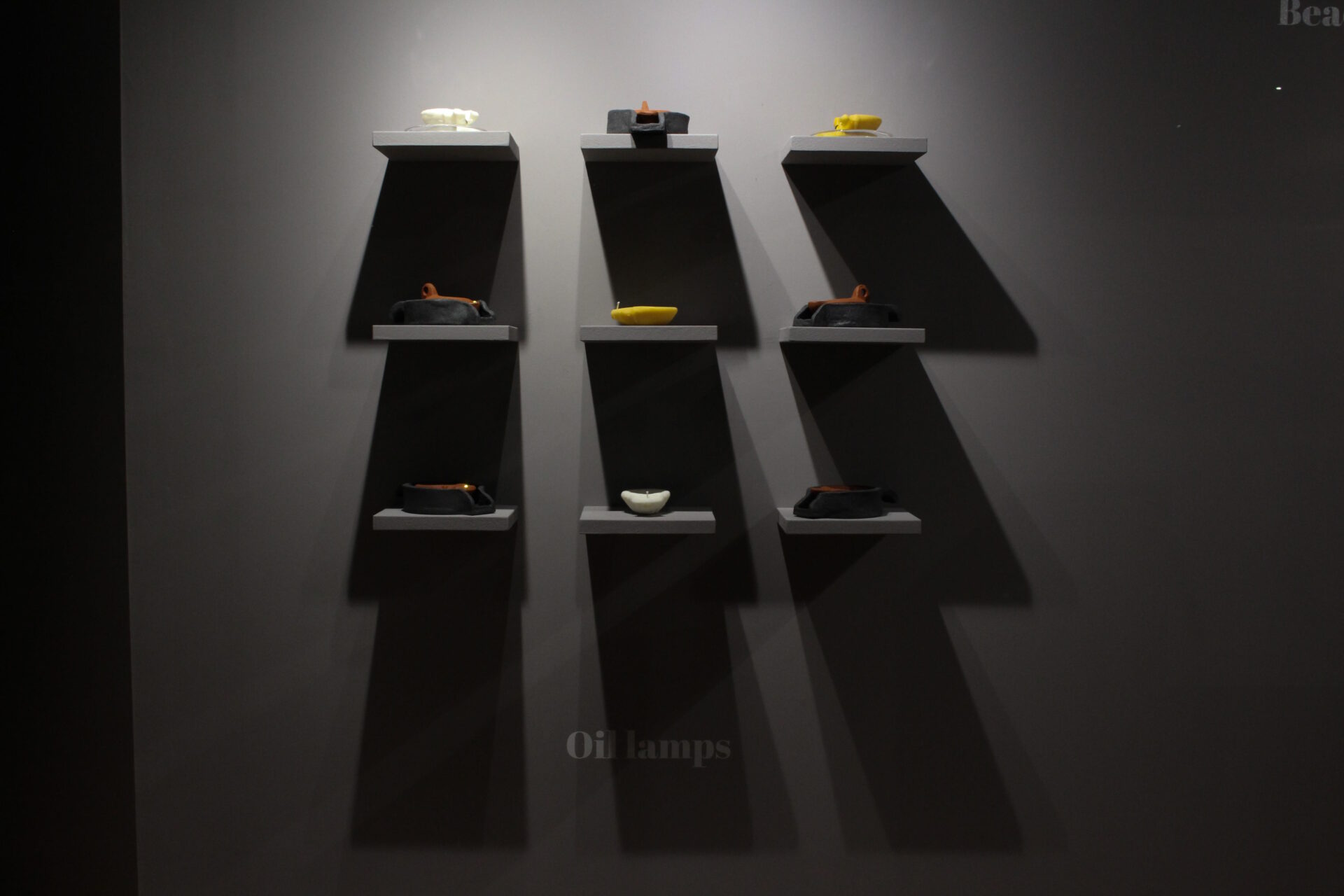

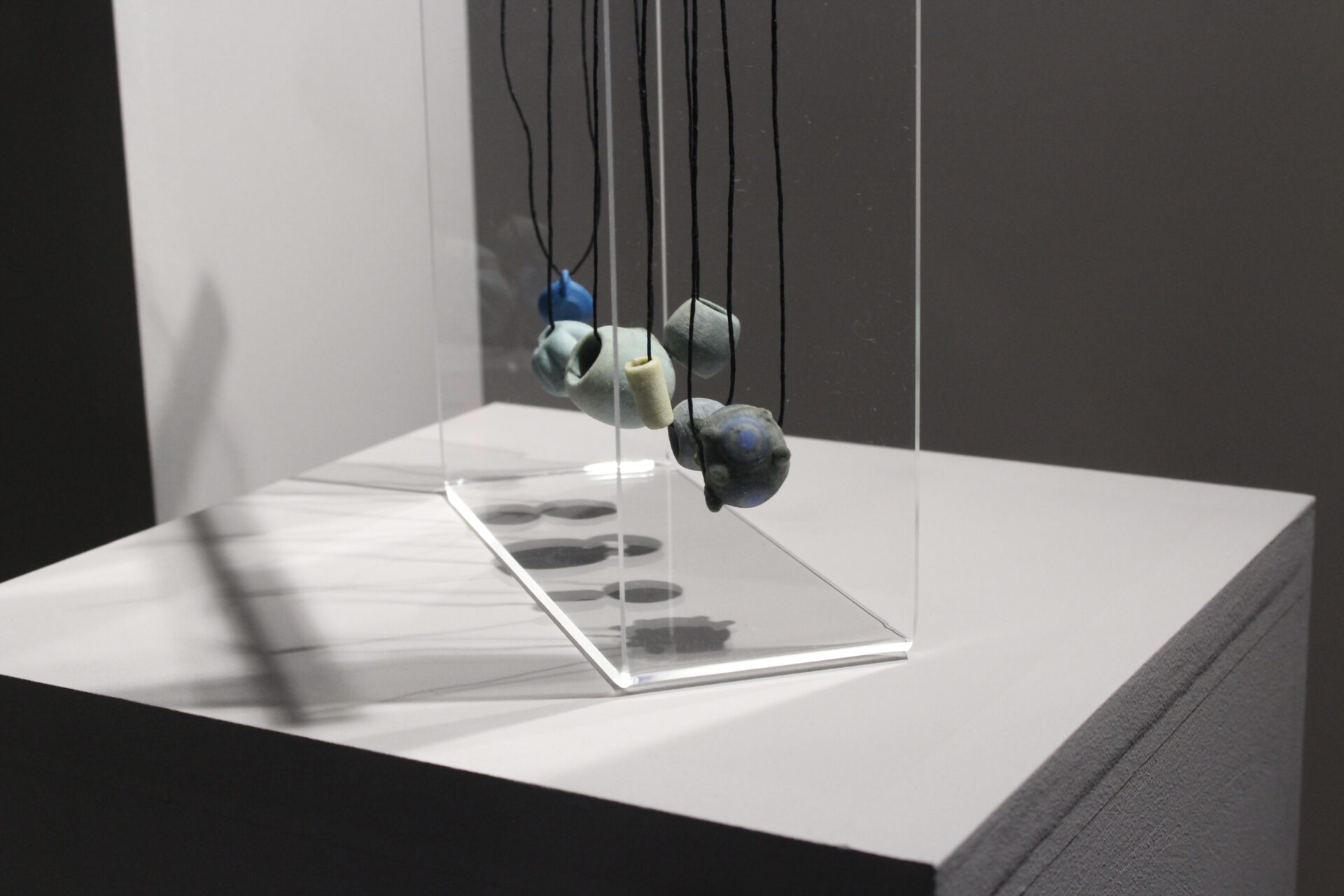
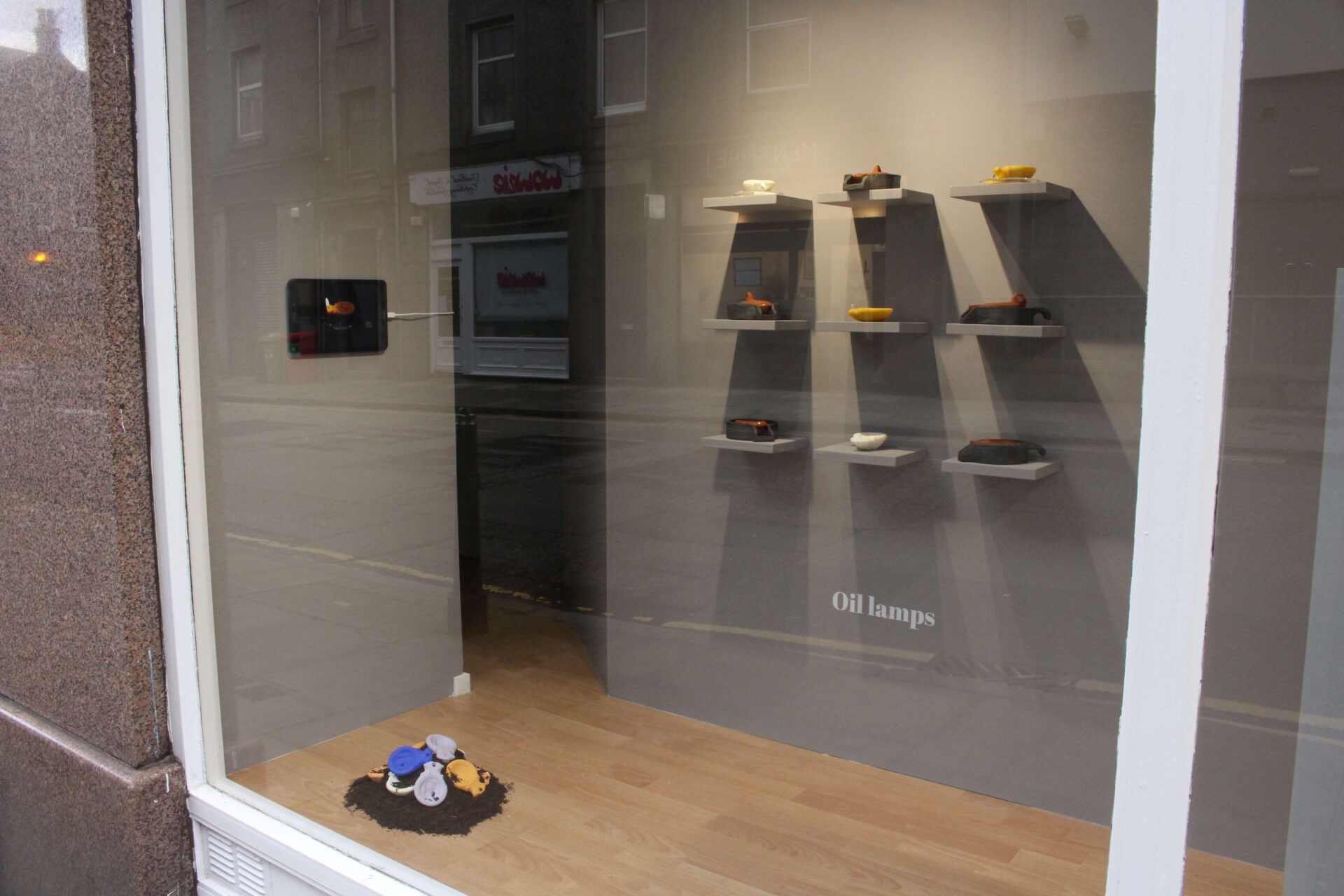
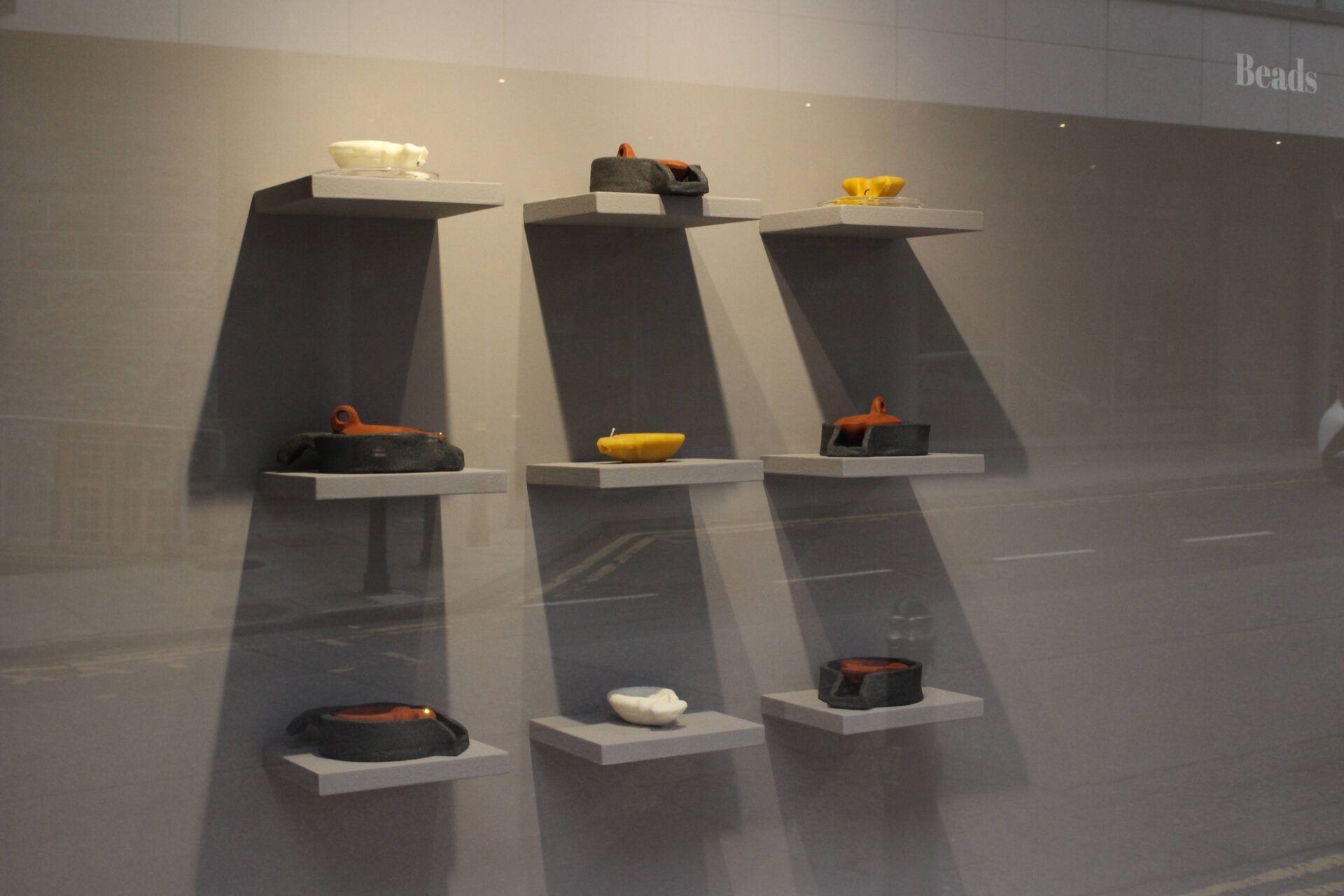

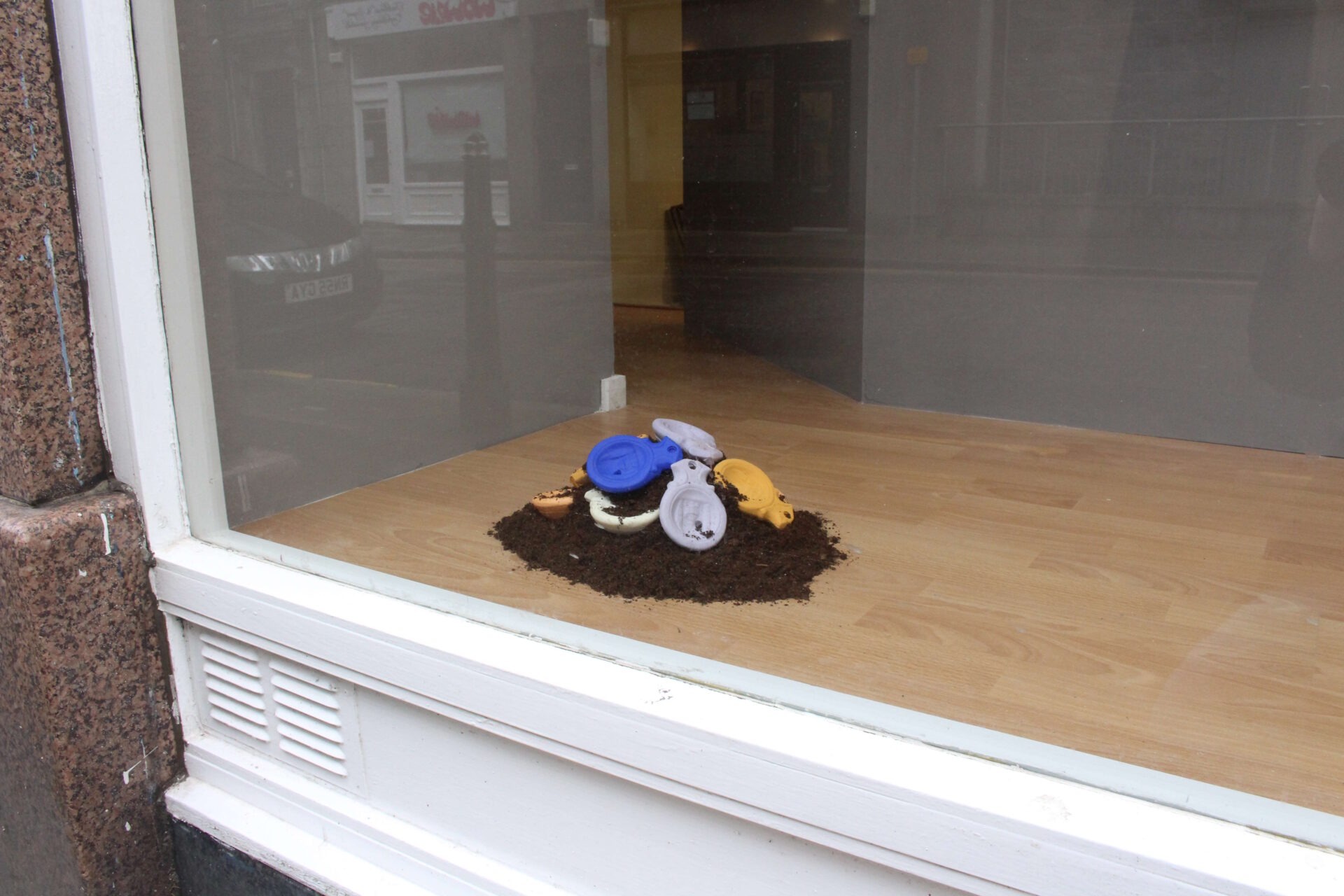

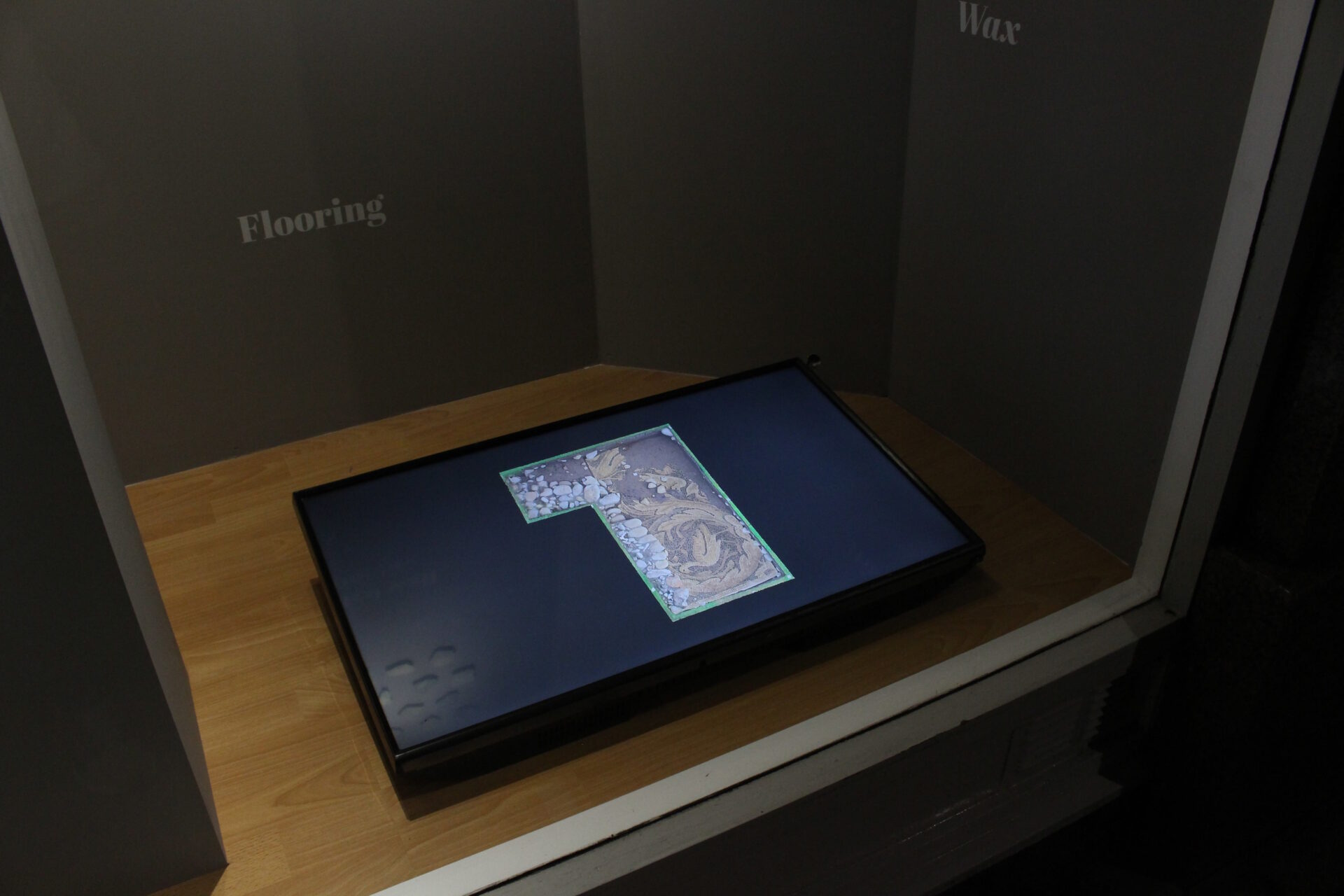
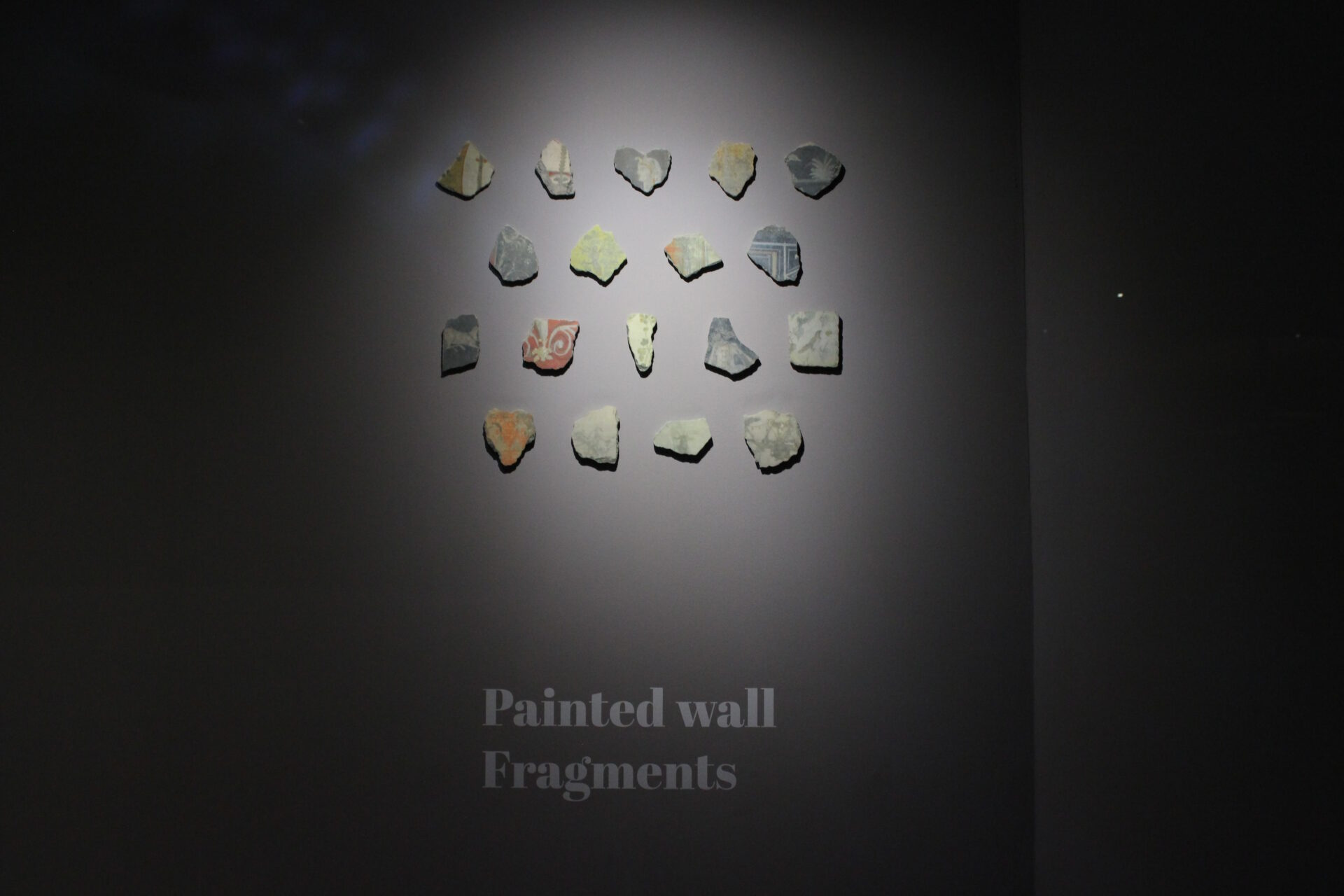
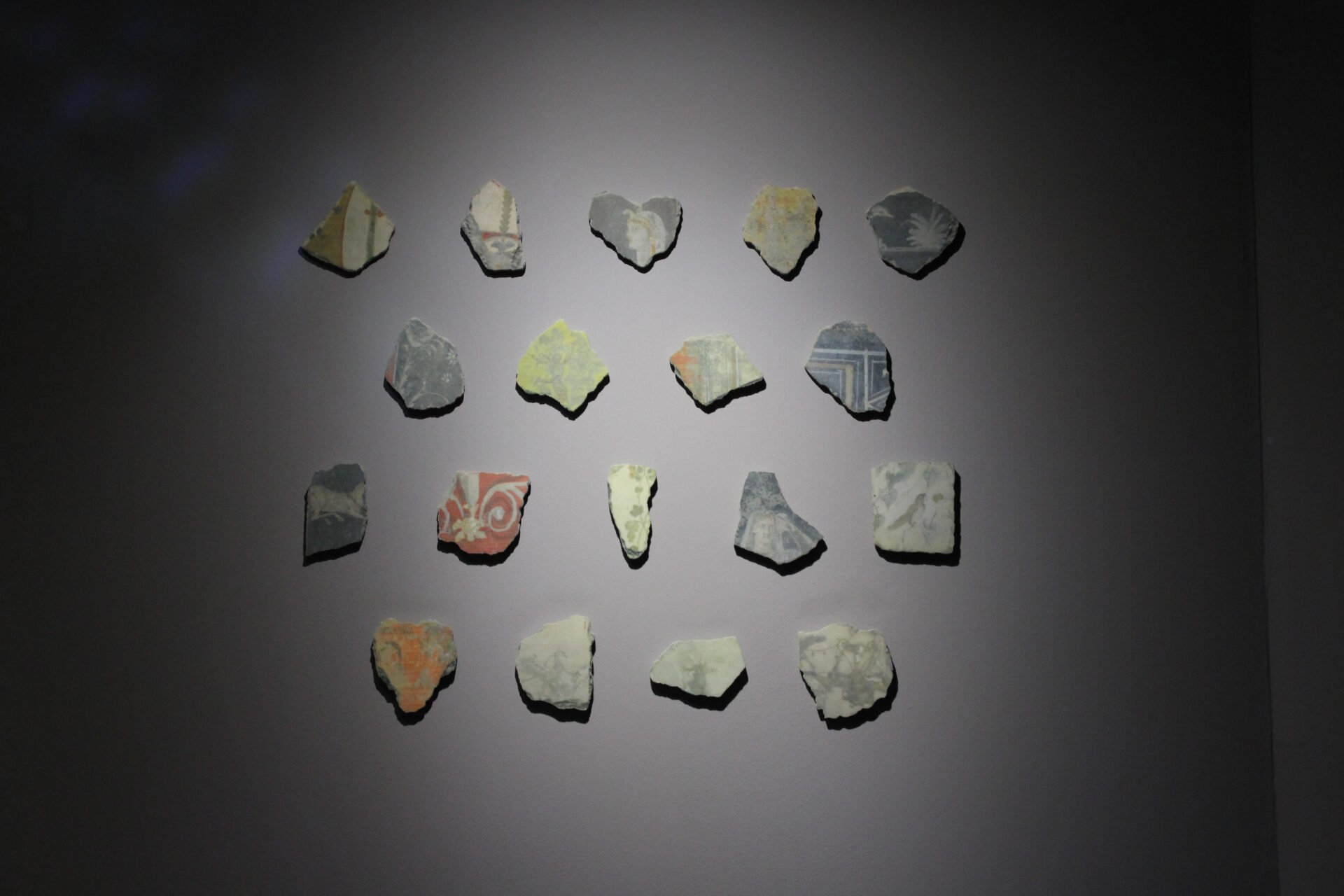
(Re)Seeing, Look Again Project Space window vitrine, Aberdeen. (Look Again Seed Fund Commission 2020).
What was interesting about the window space is how it sort of suited the constantly changing work I had been making. To display my objects in something that resembles a cabinet was quite fitting to the ideas behind my project. To make my display different from a standard museum I used vinyl text and presentation to best engage the viewer, which you can see here. A QR code was used in the space as well so the public could connect back to my Digital Residency at the same time, giving a nice behind-the-scenes feel and a real mix of digital and physical works.
Inside images during install
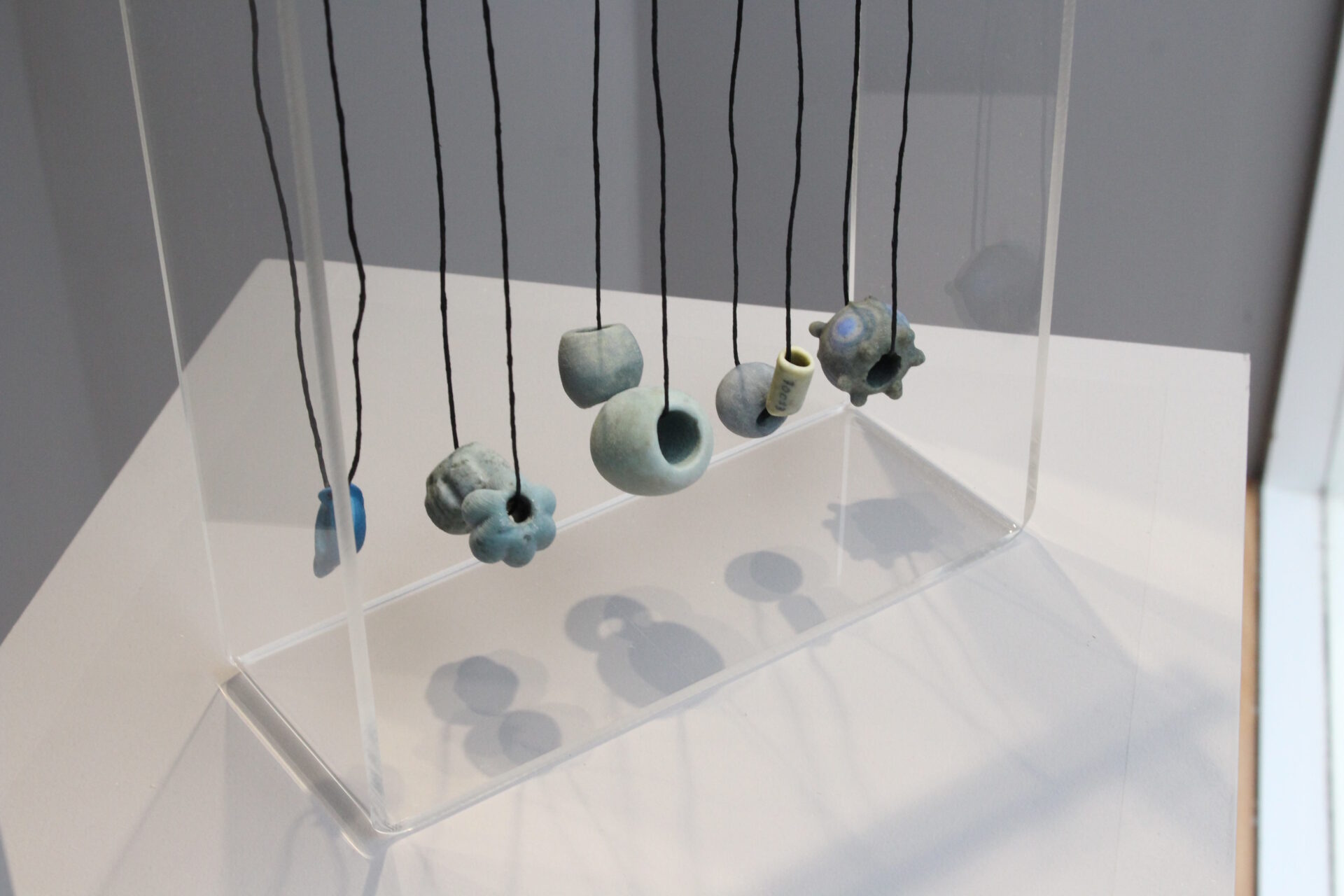

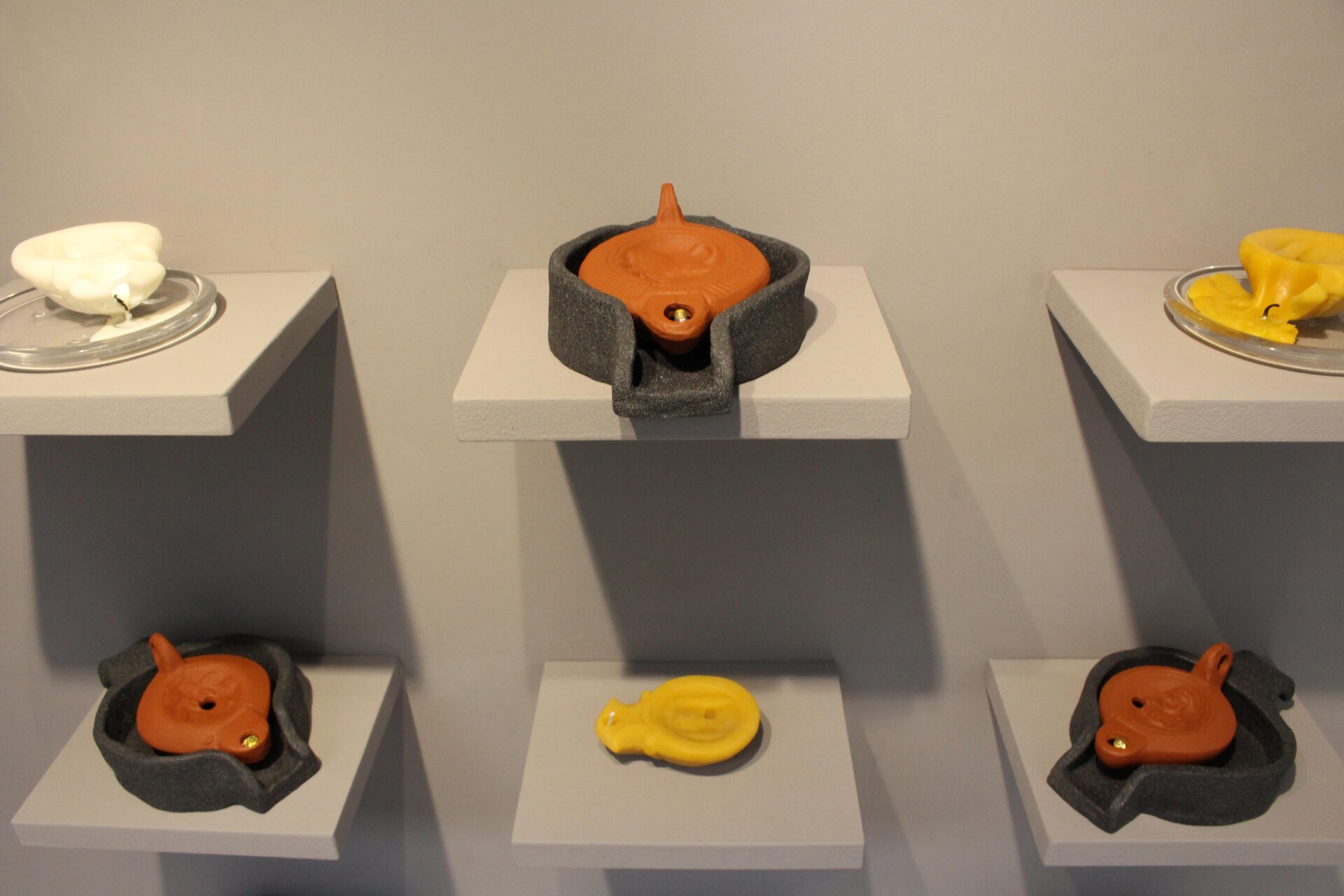
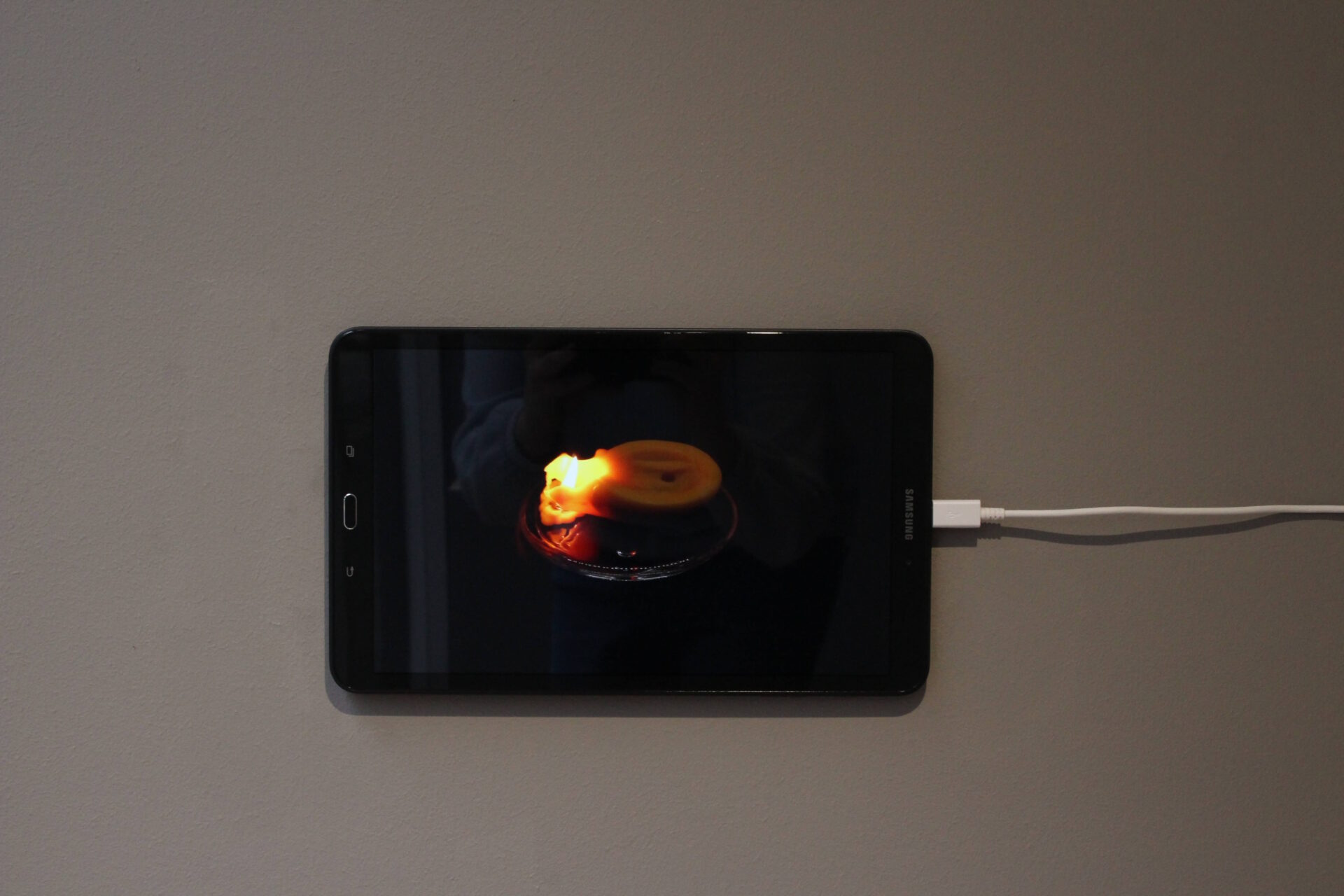
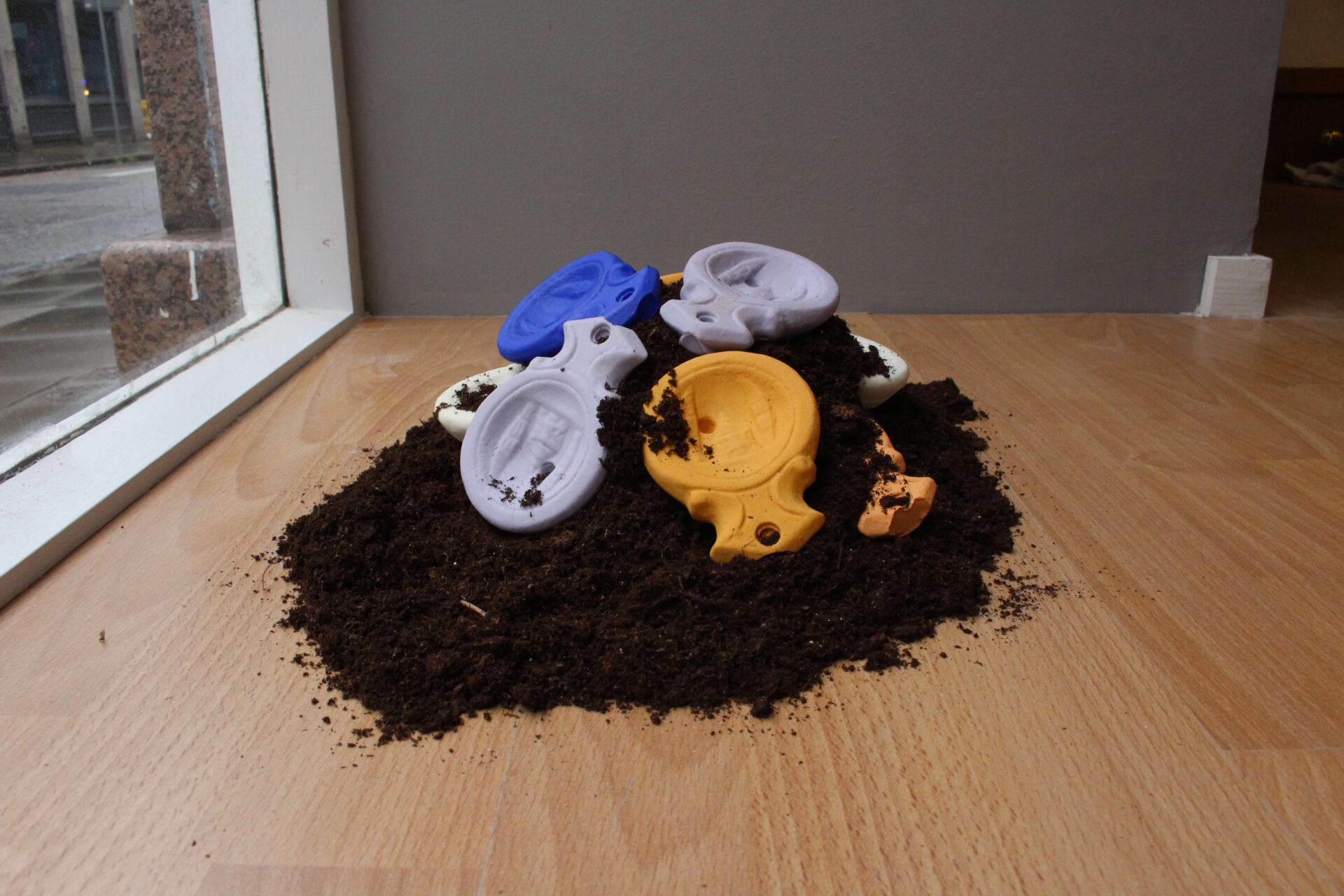
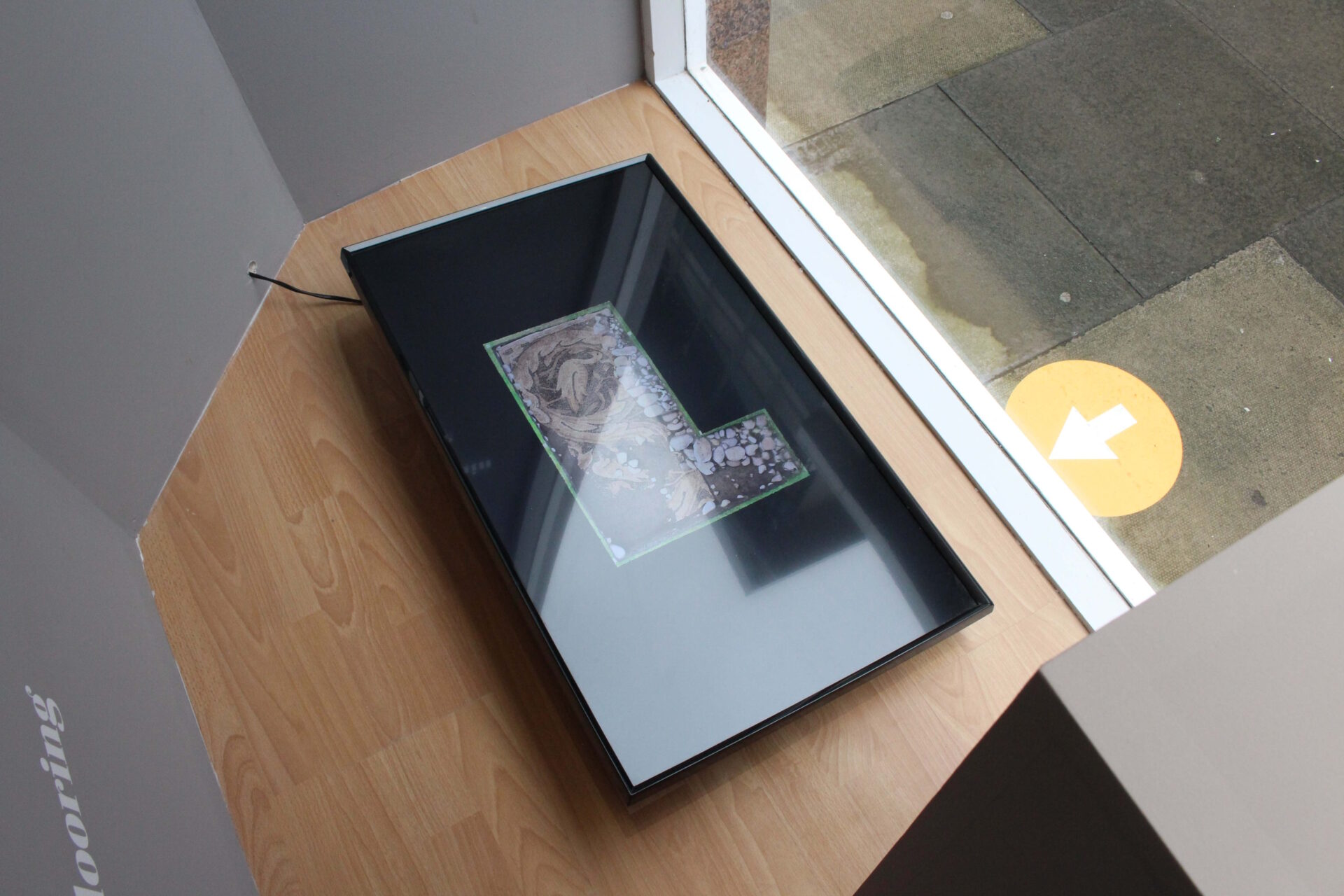
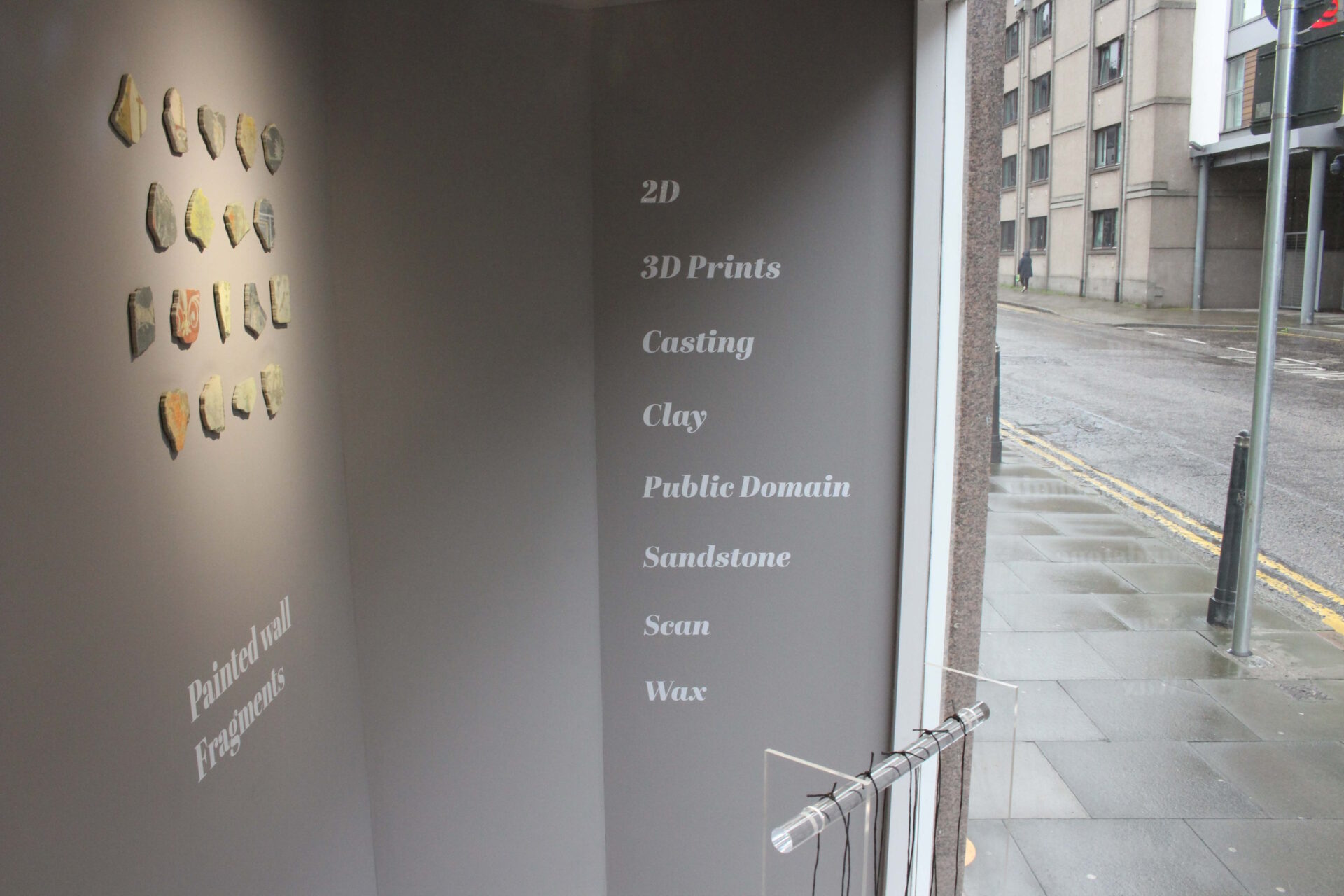
Painted wall fragments
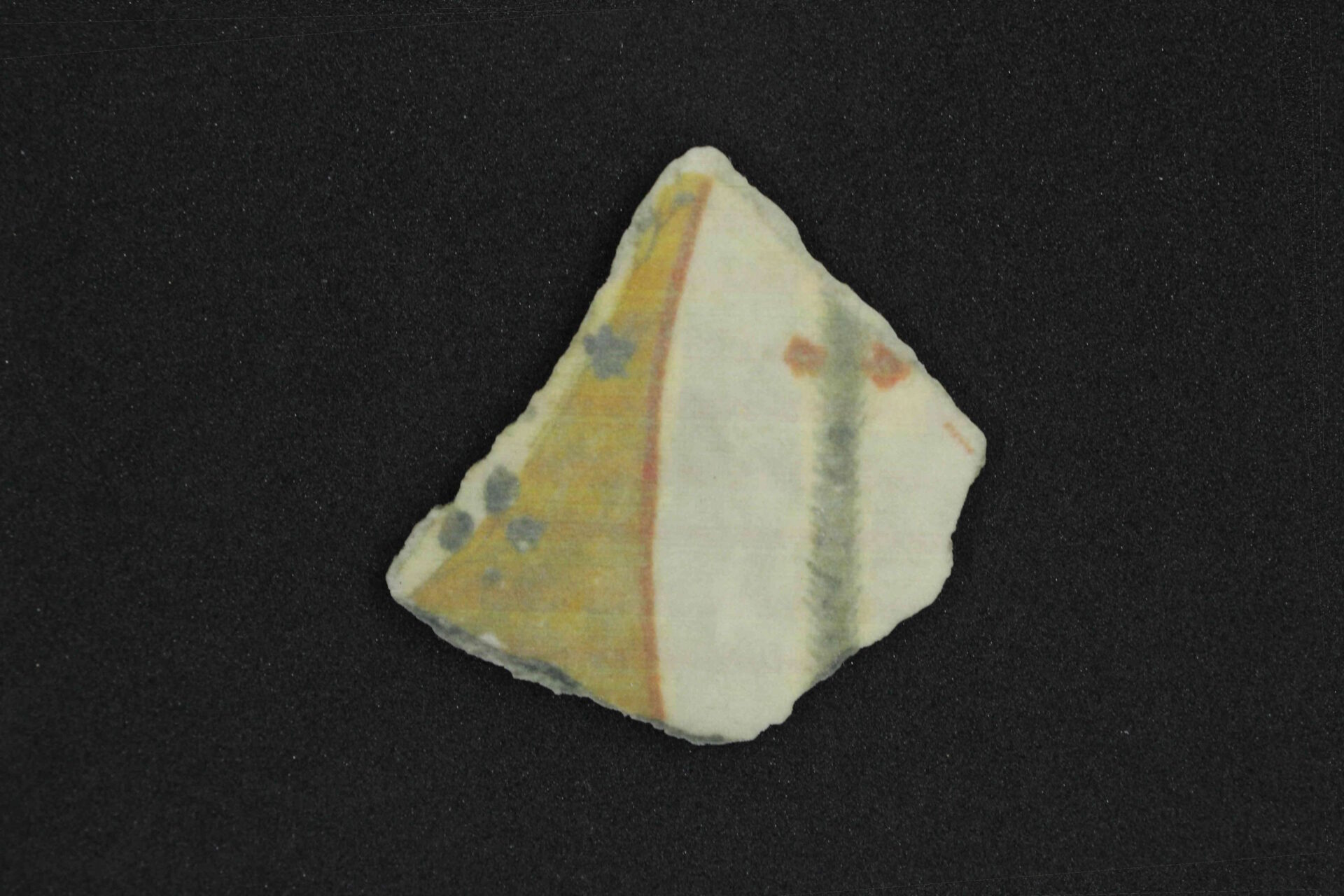
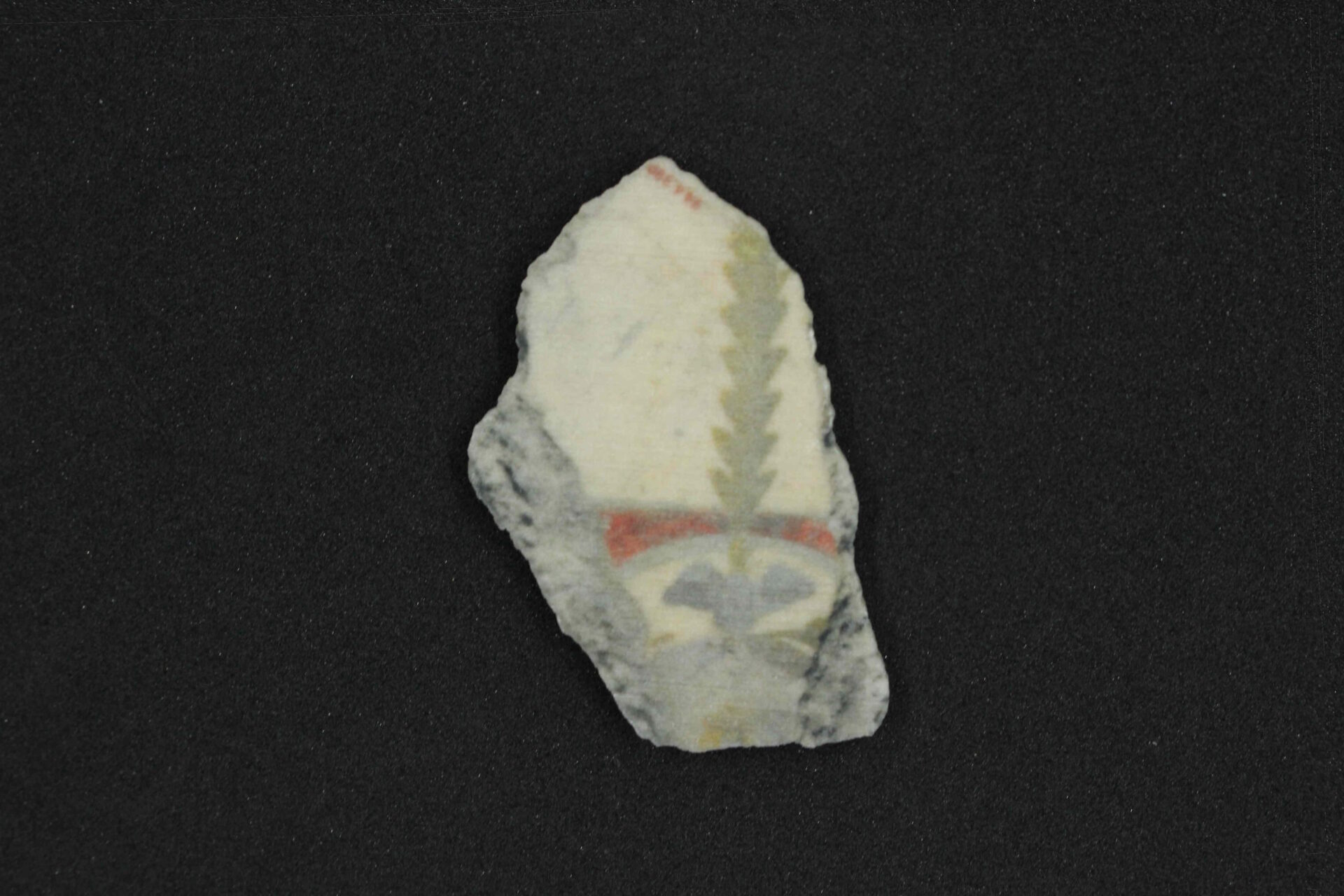
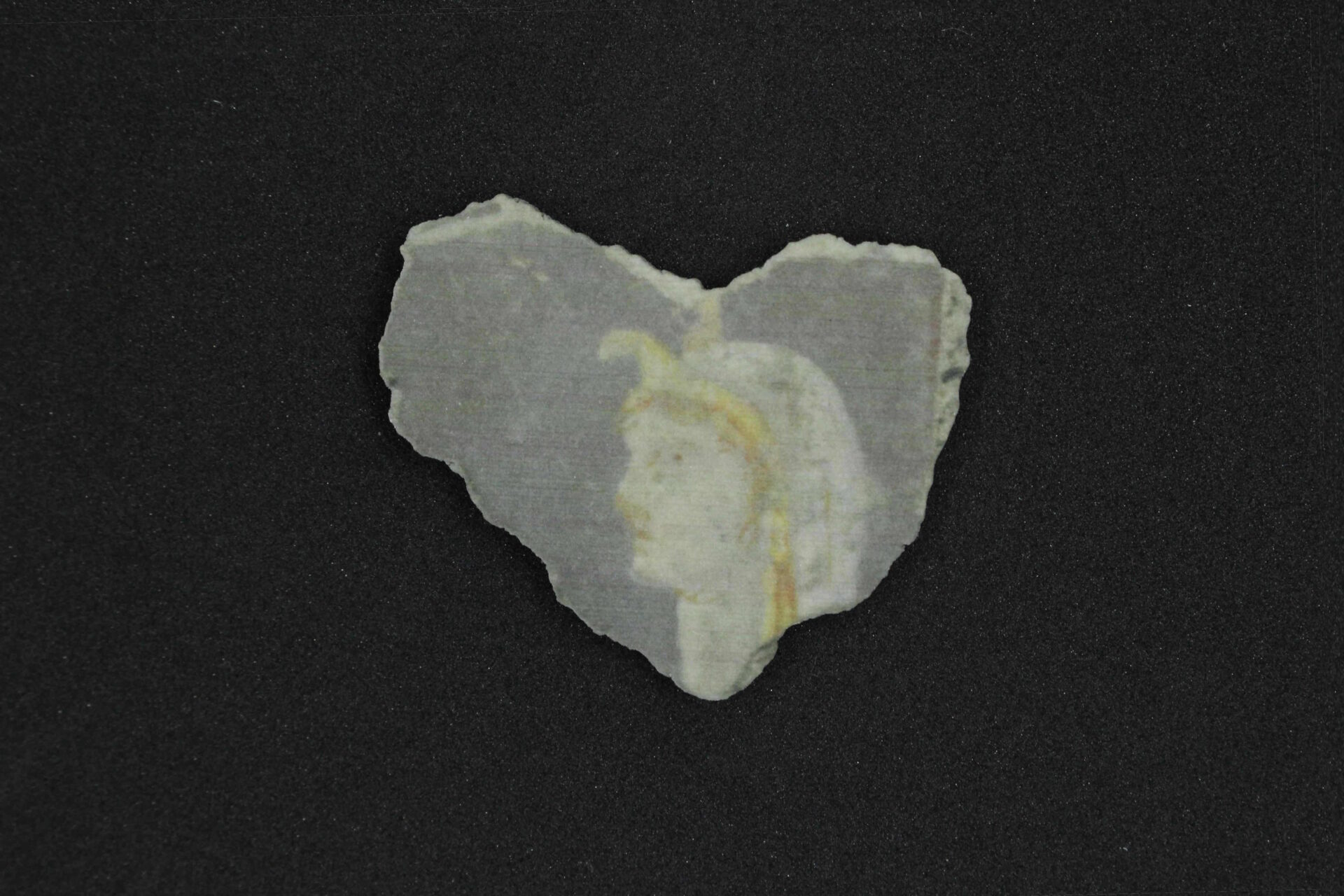



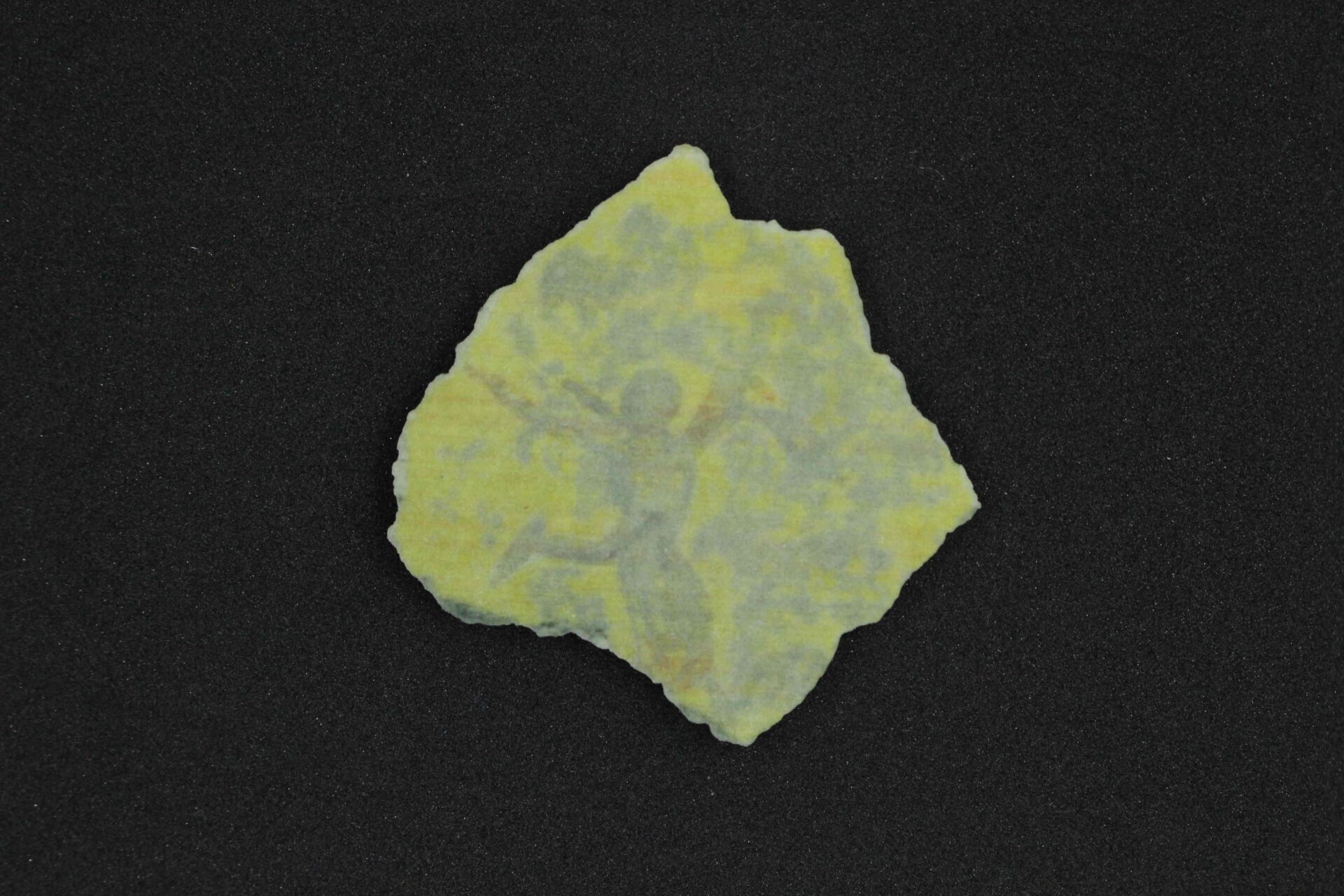
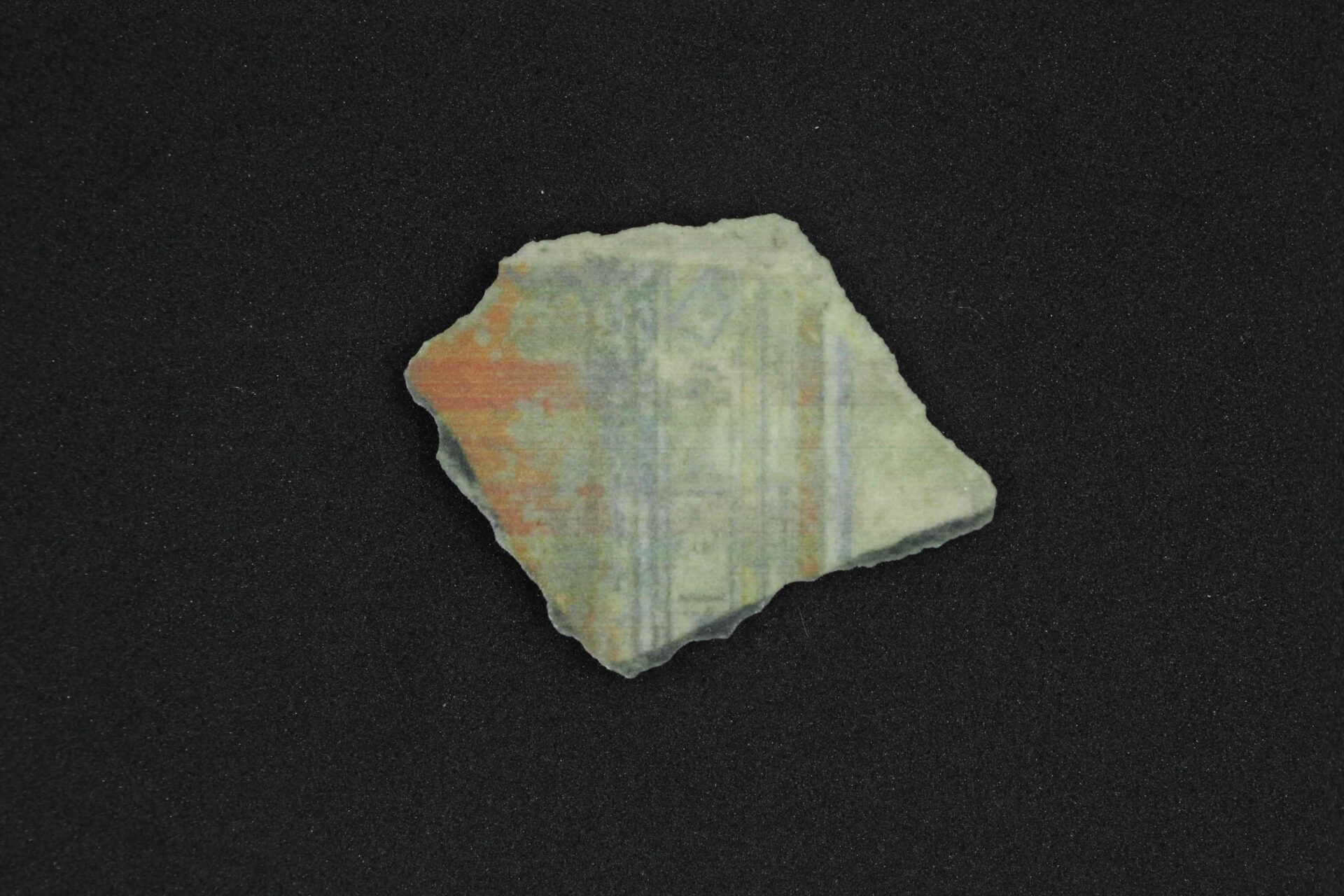

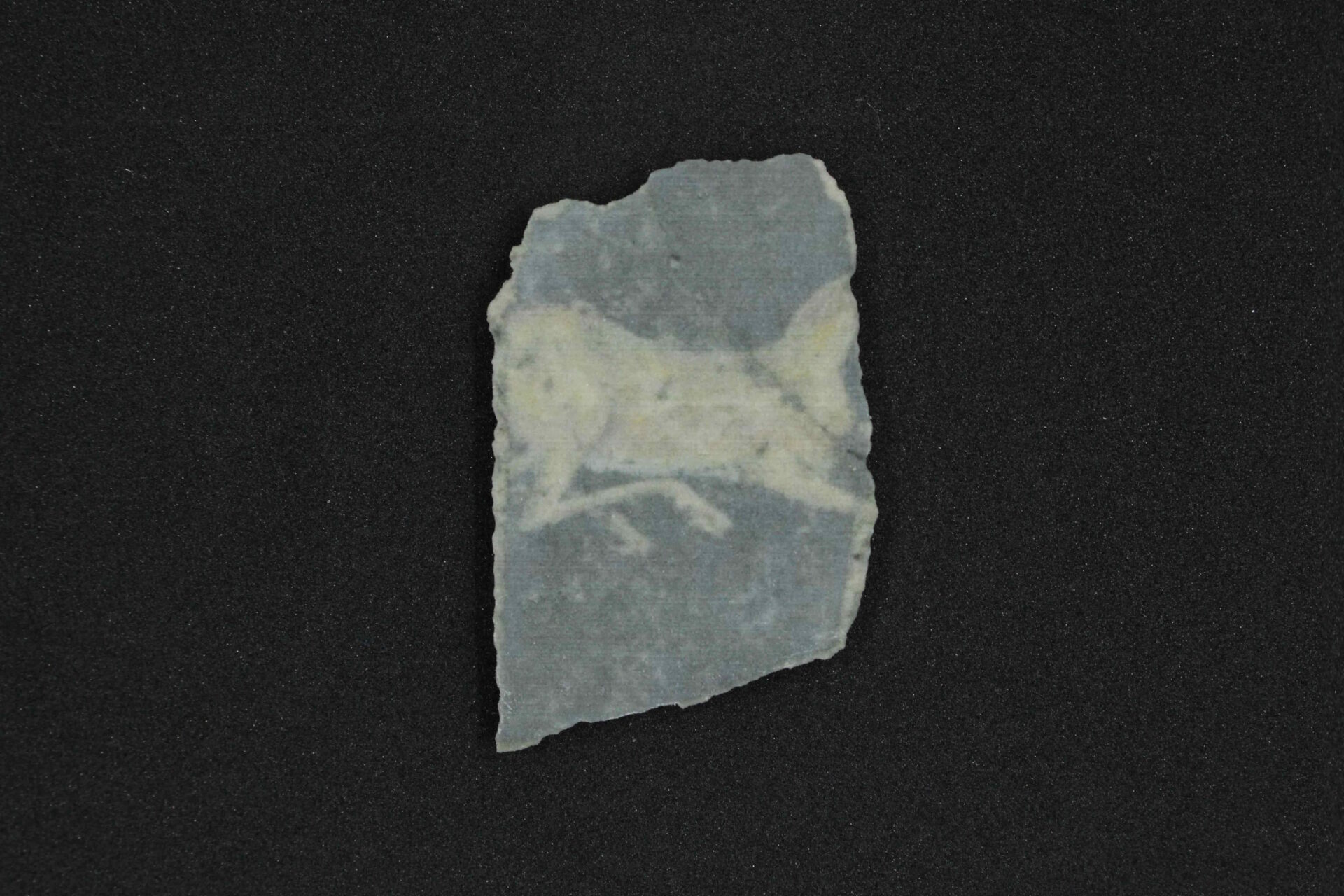

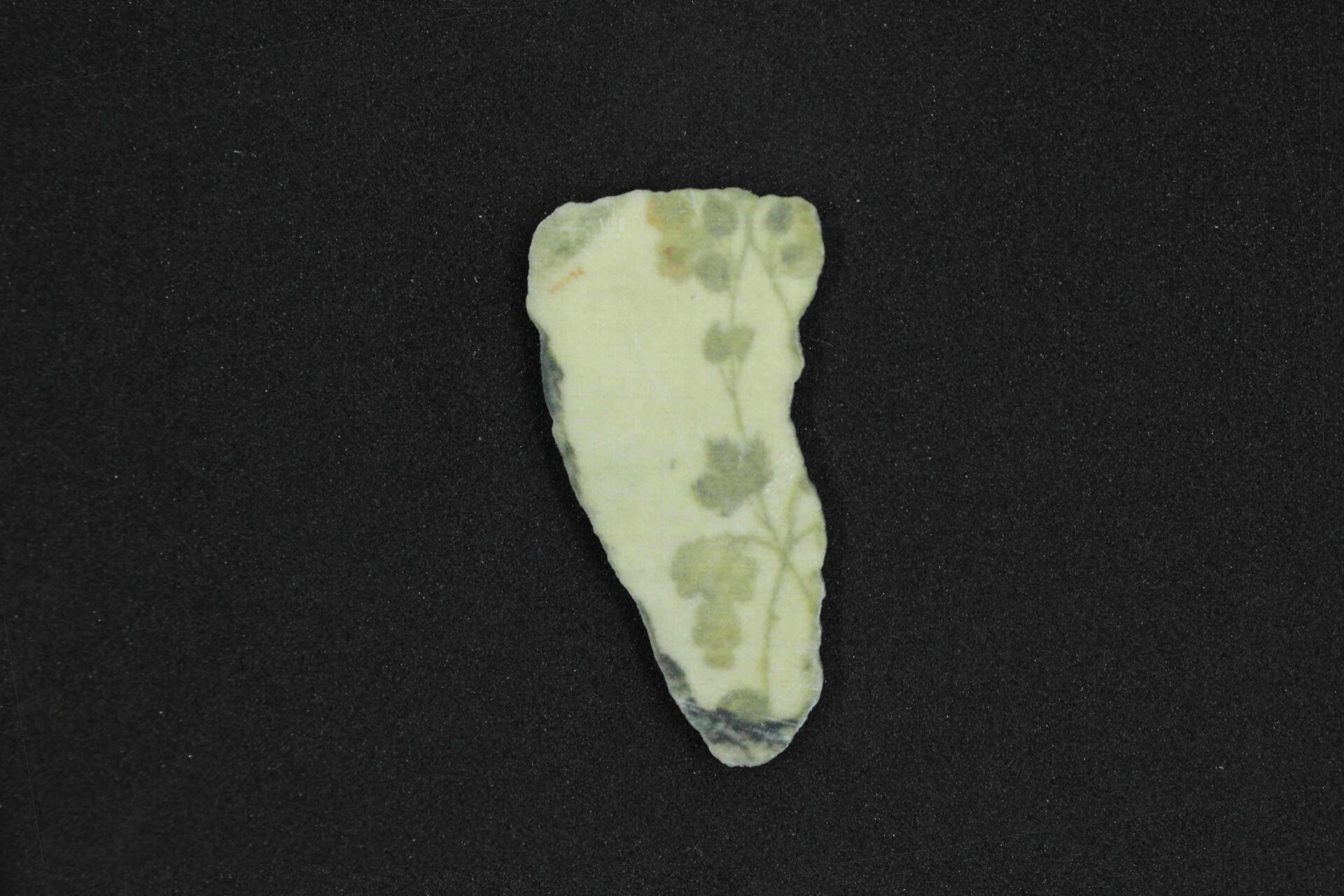





Over time colour is often lost but what I find incredible is how traces of paint can still be found in the archaeological record, this can tell a completely different story from what is assumed and the plaster remains are a great example of this due to their distinct nature. I went with eighteen fragments and all the images were sourced from The Metropolitan Museum of Art. I 3D printed them in a sandstone material which retains the colour in the 3D files, it just seemed like the most appropriate medium for them.
Oil lamps
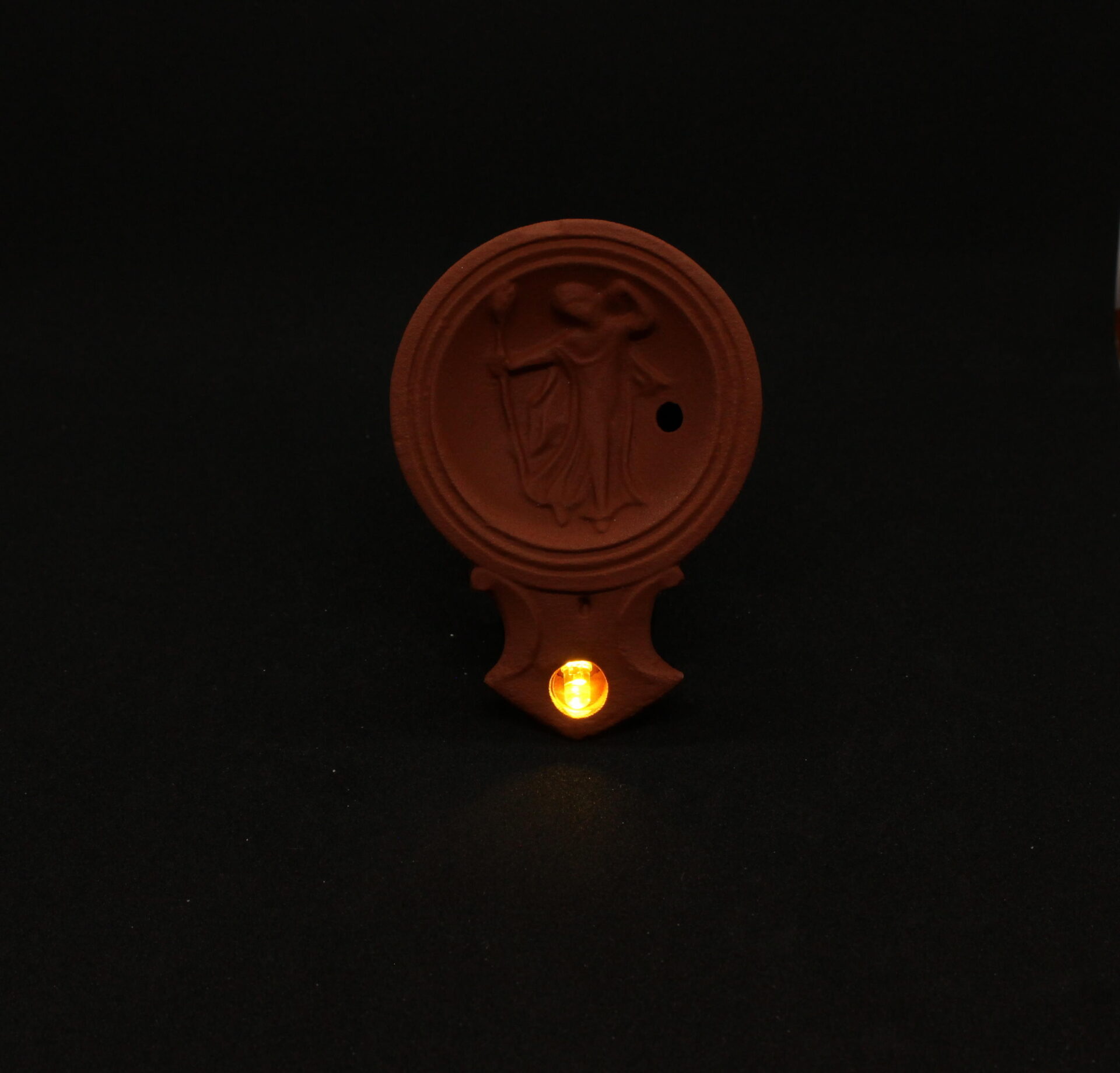

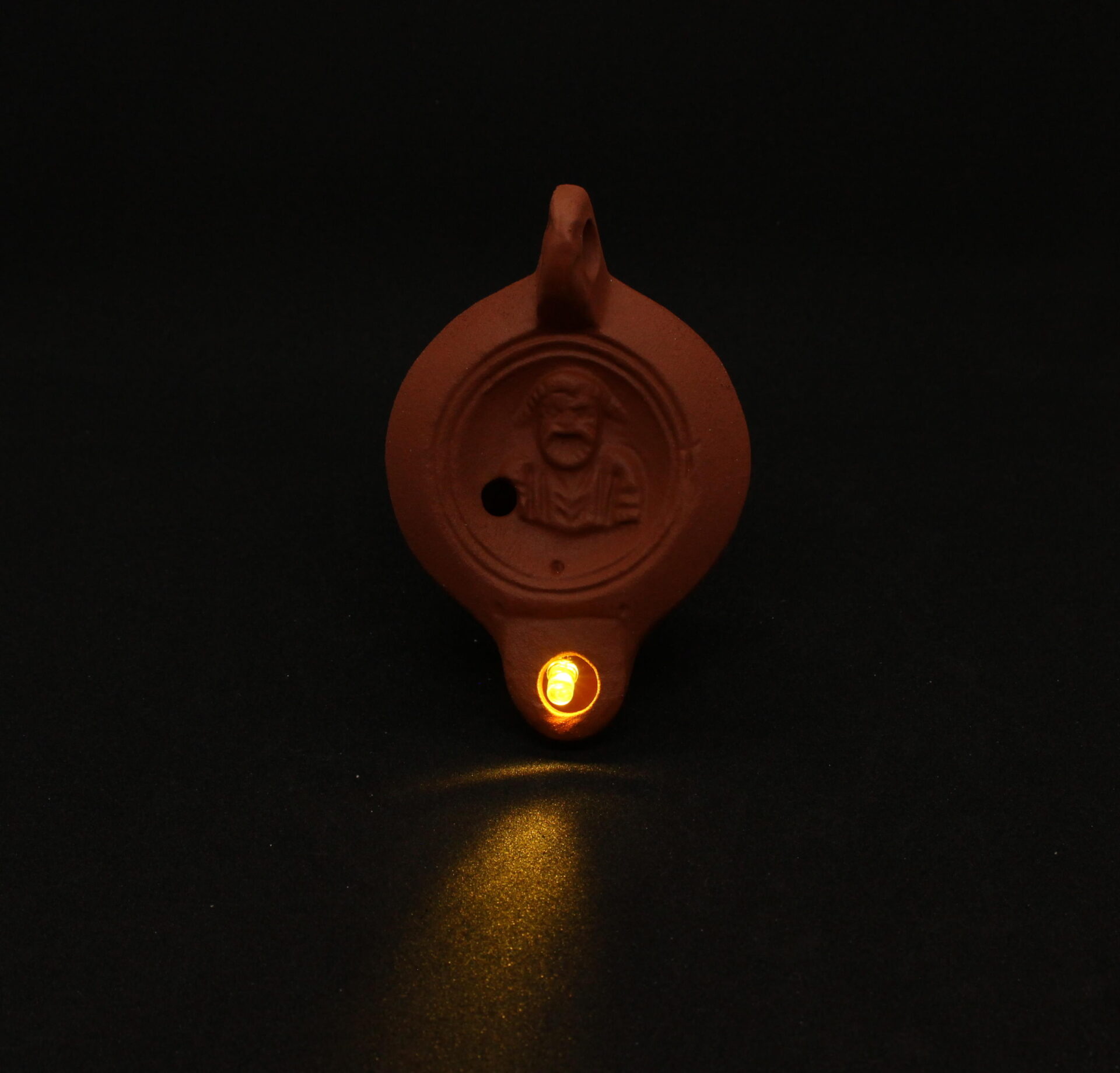

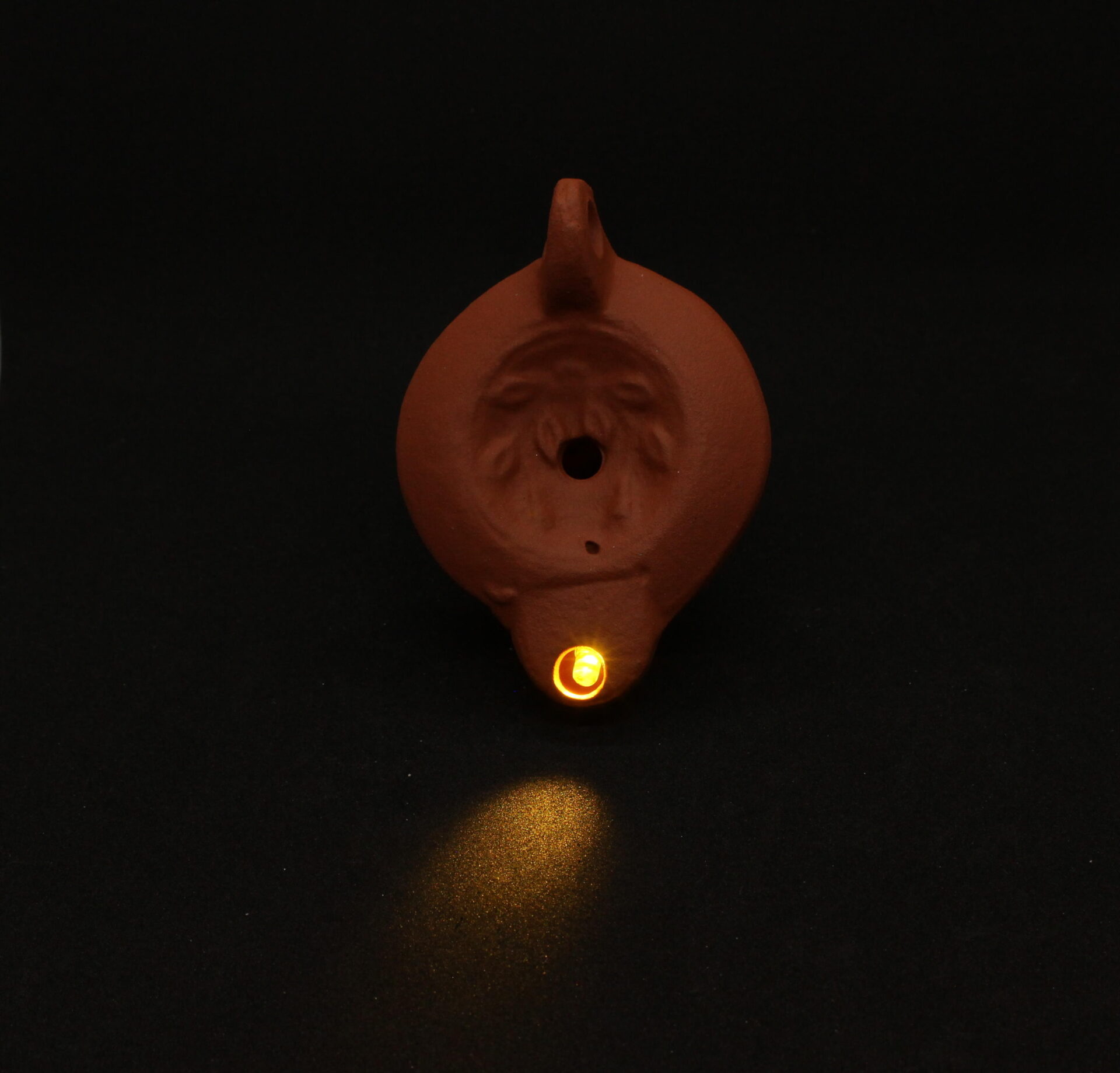
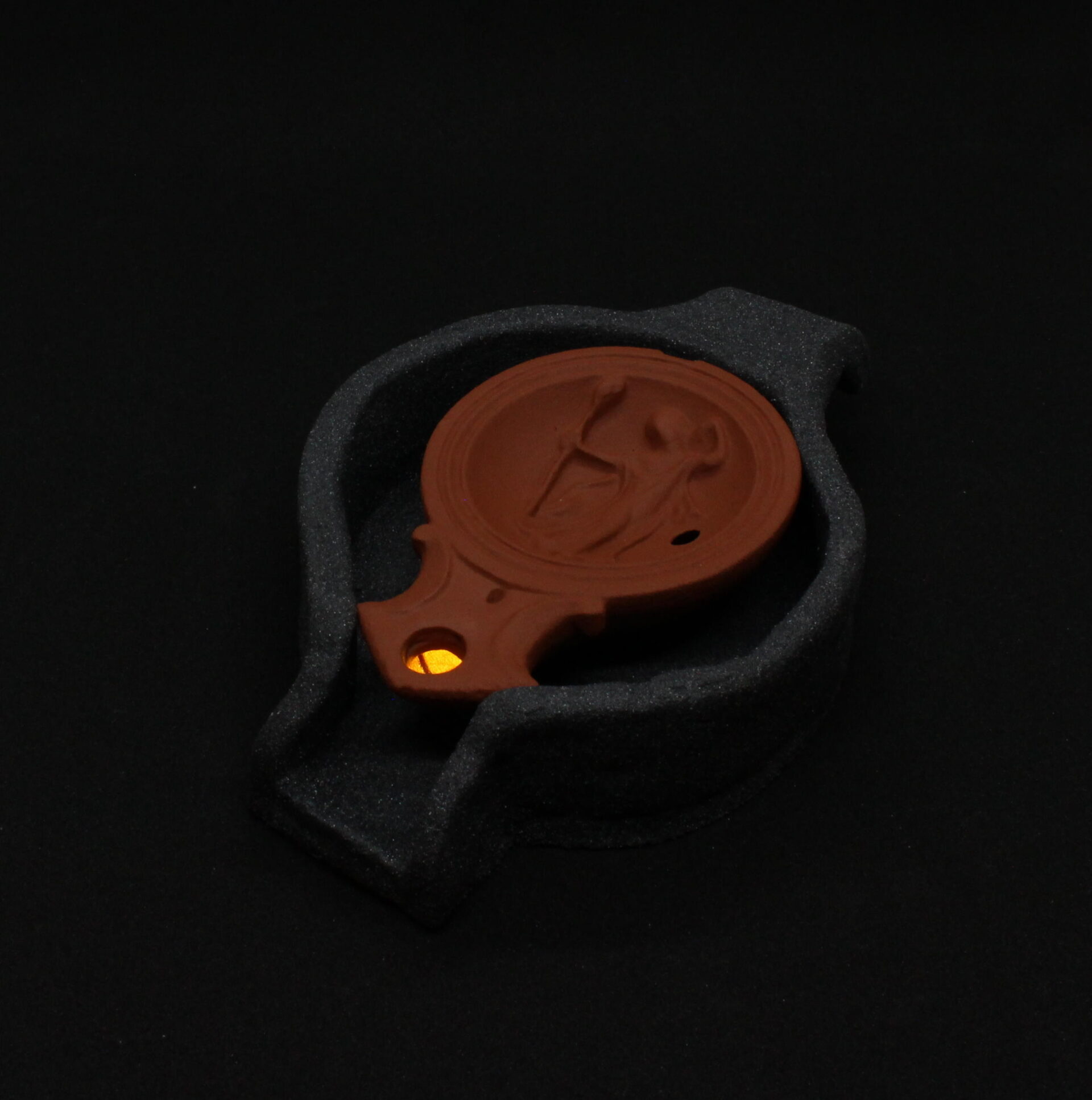
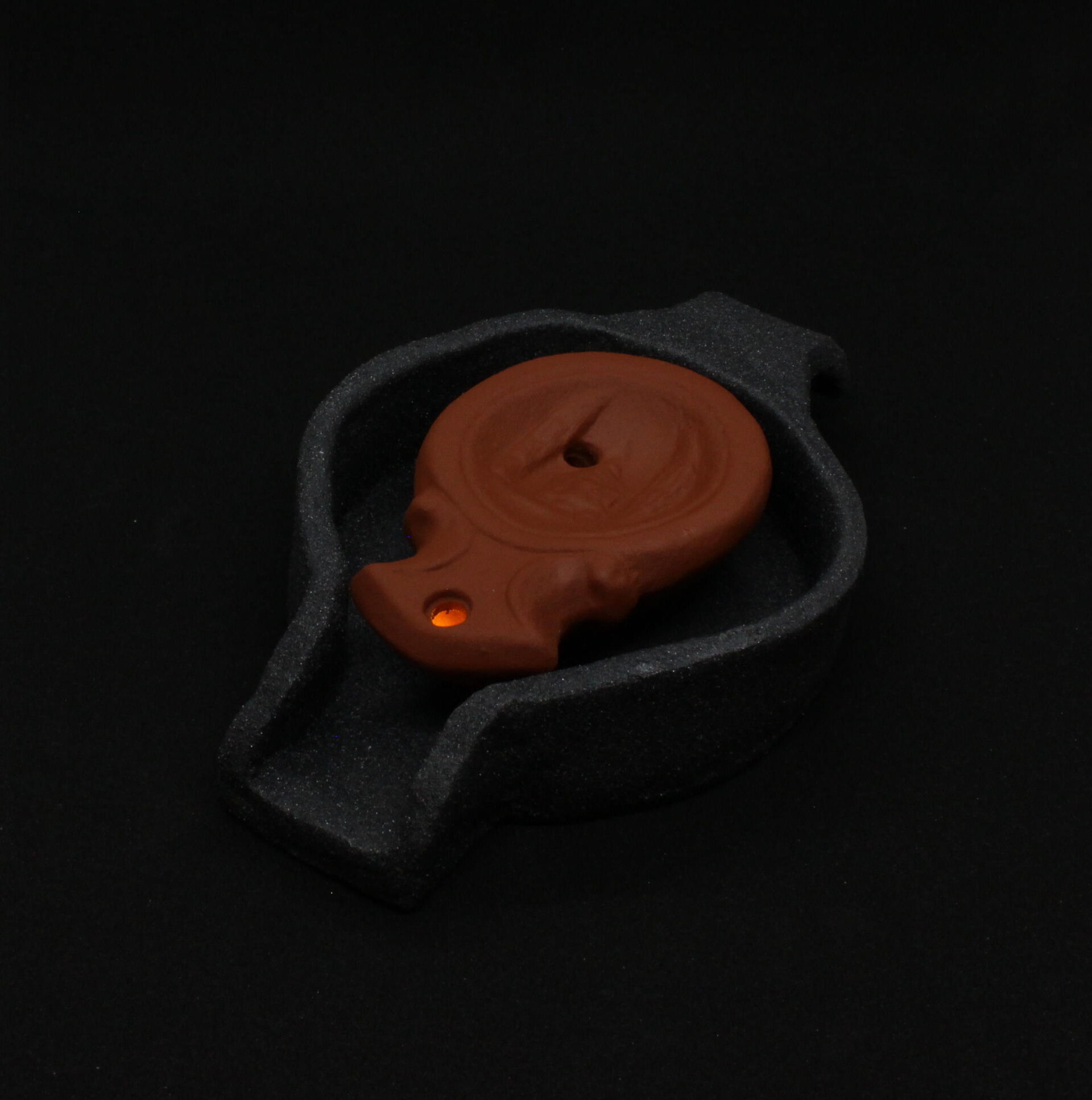
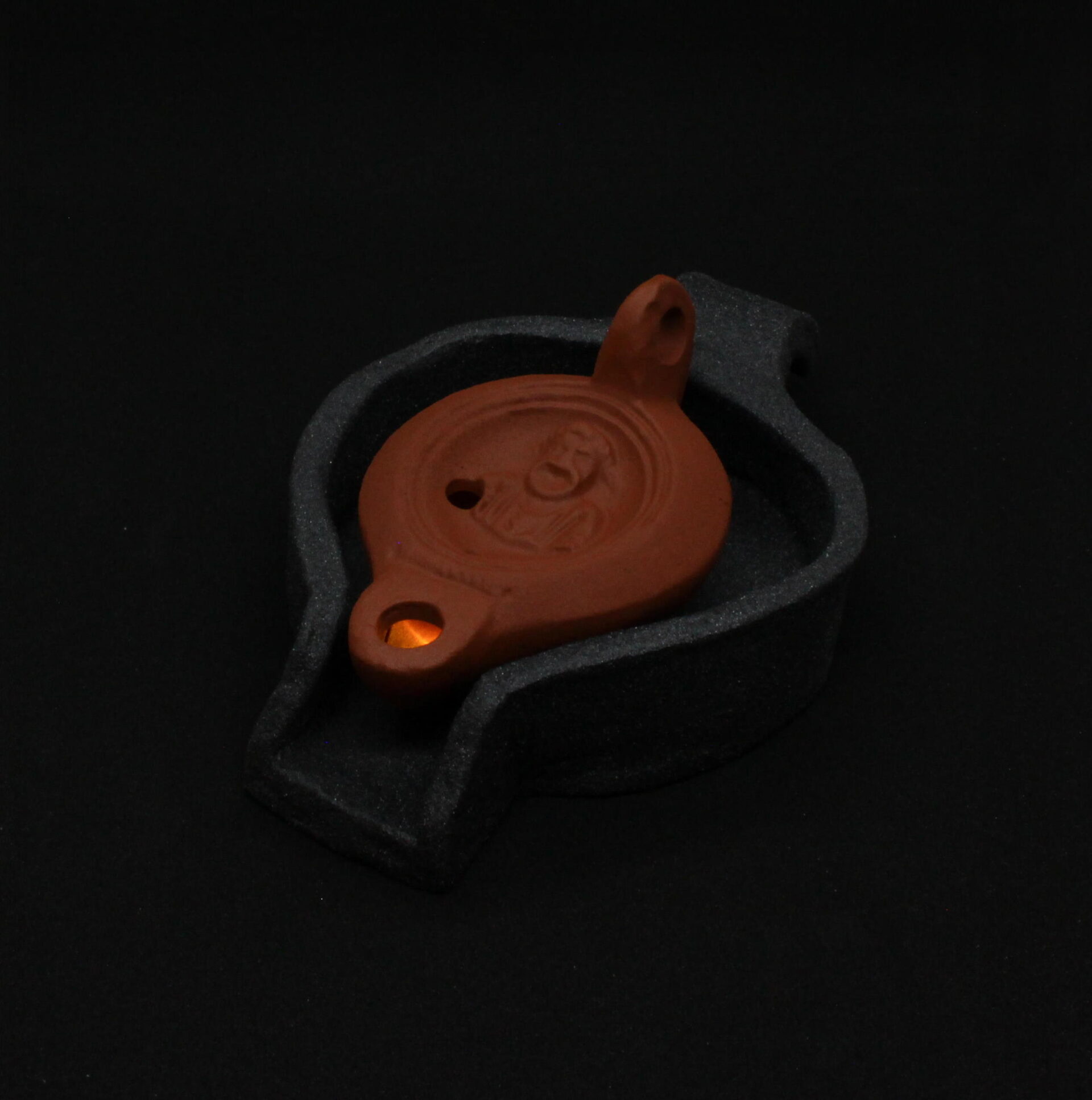

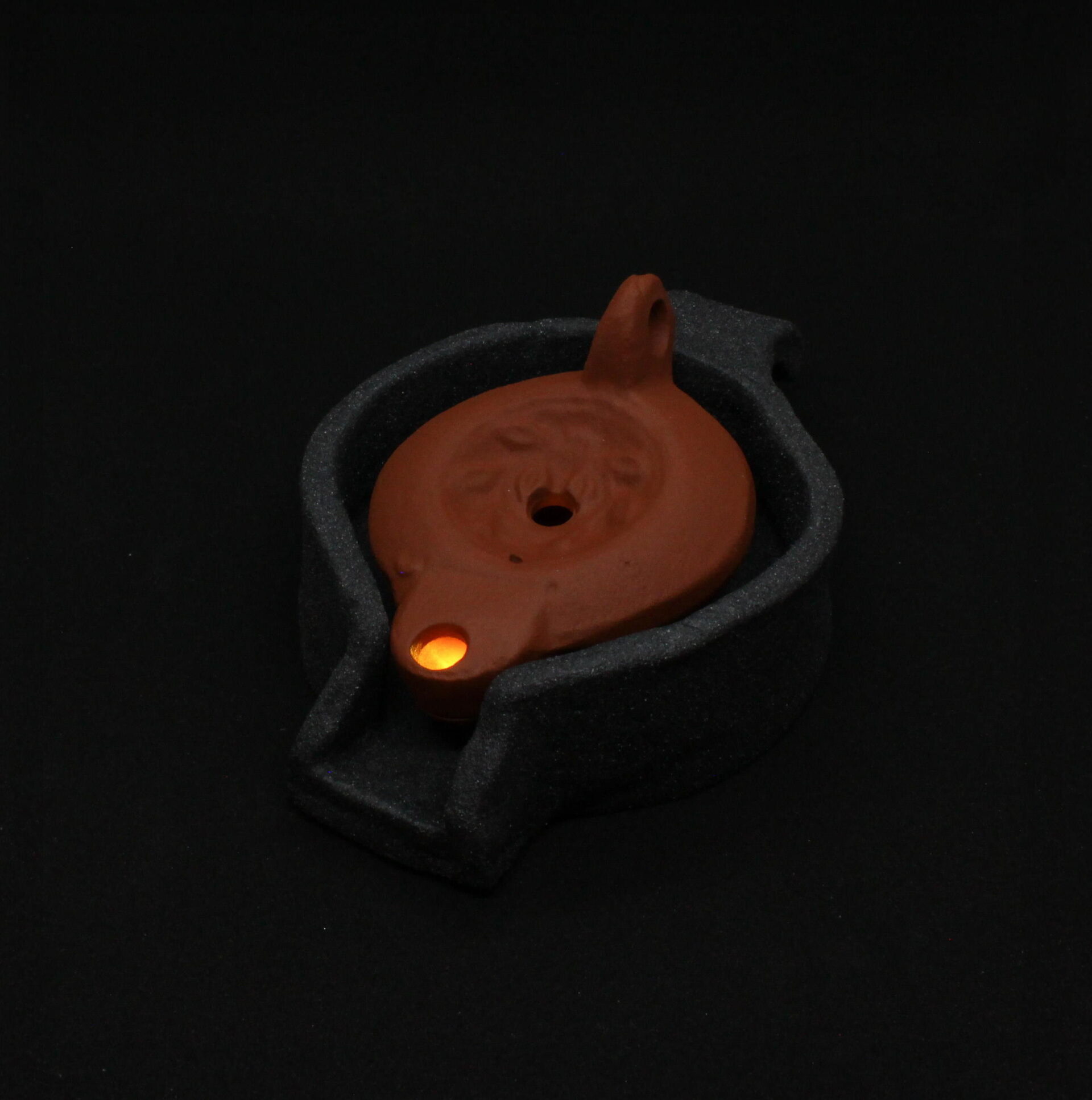


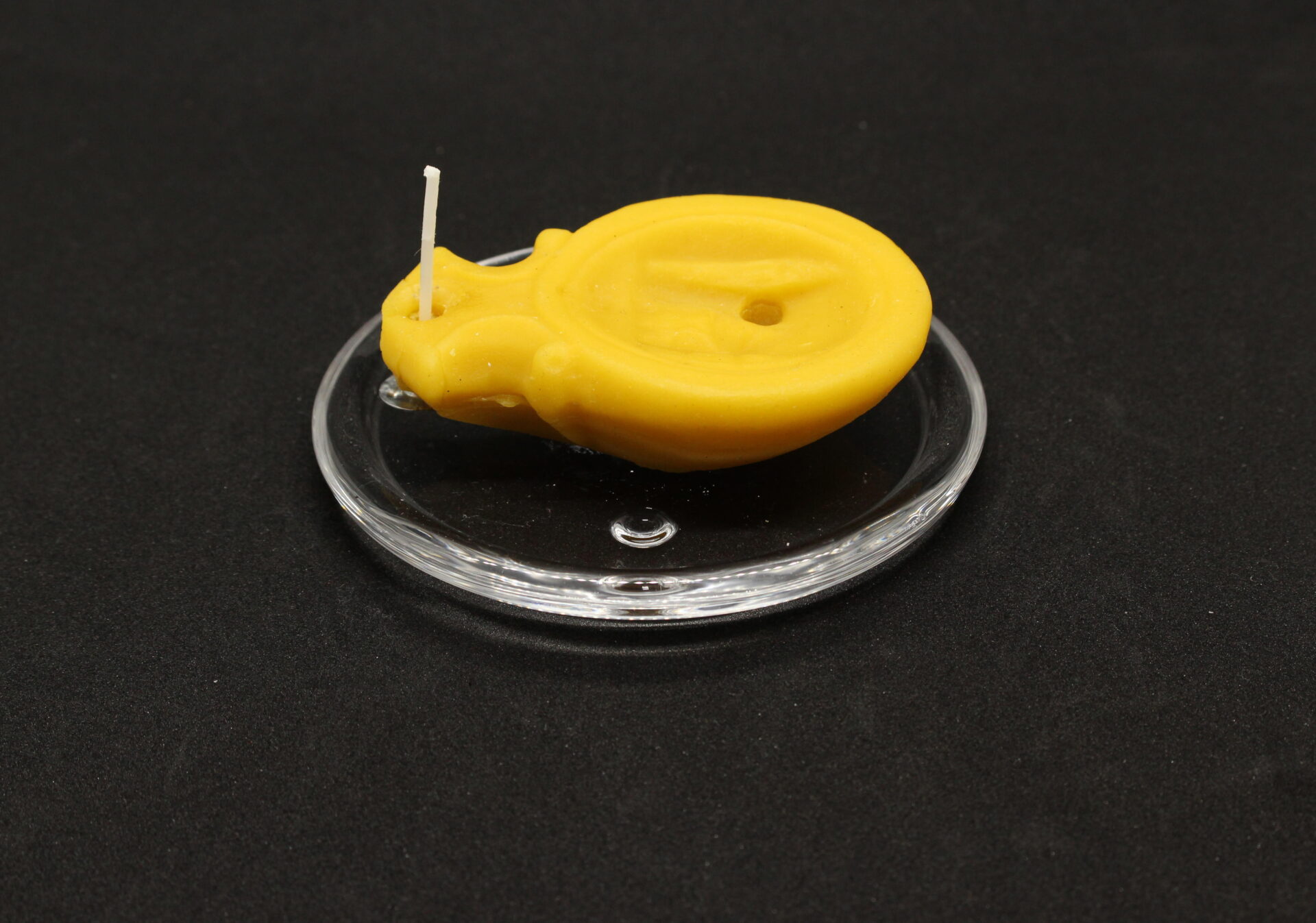
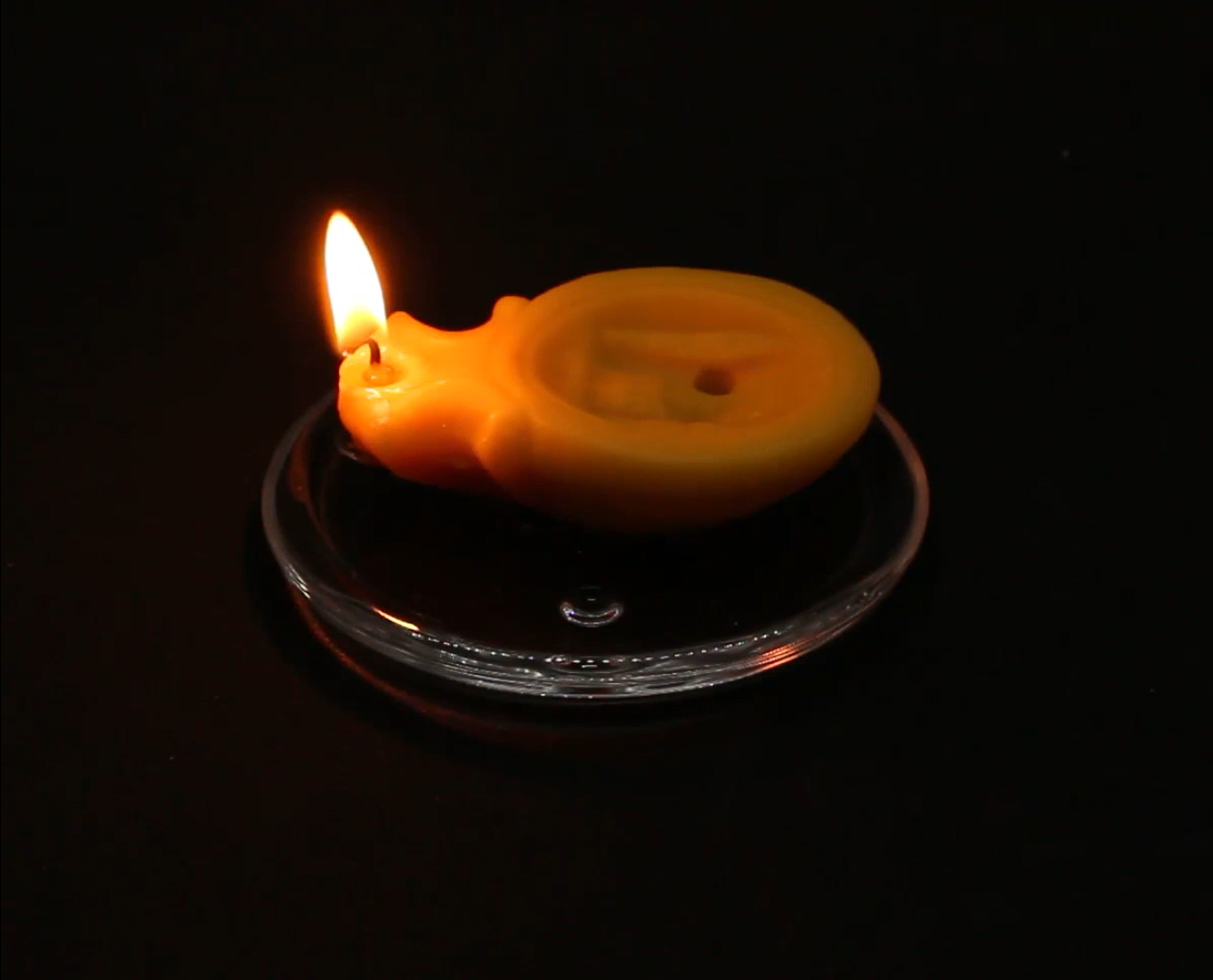


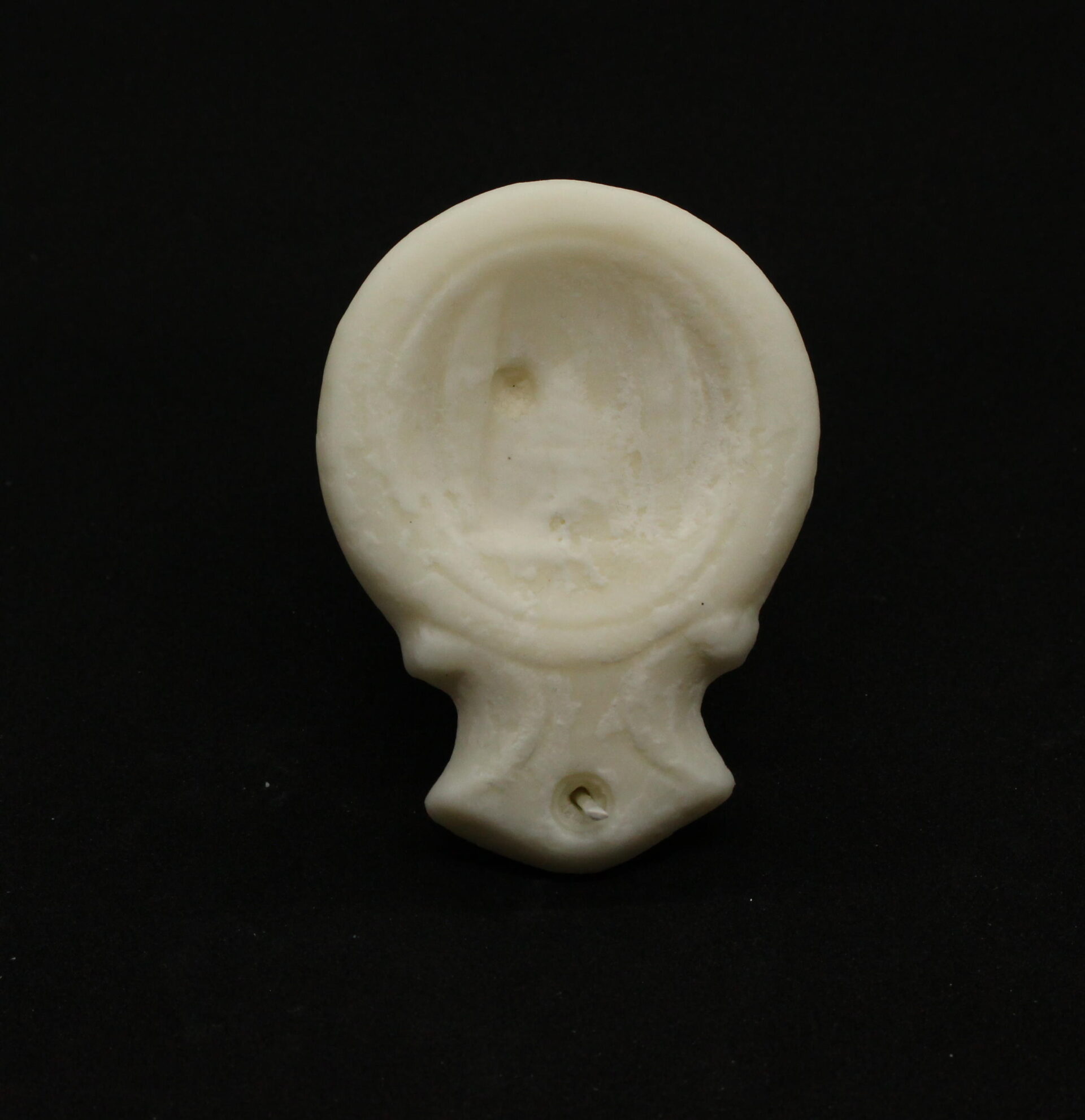
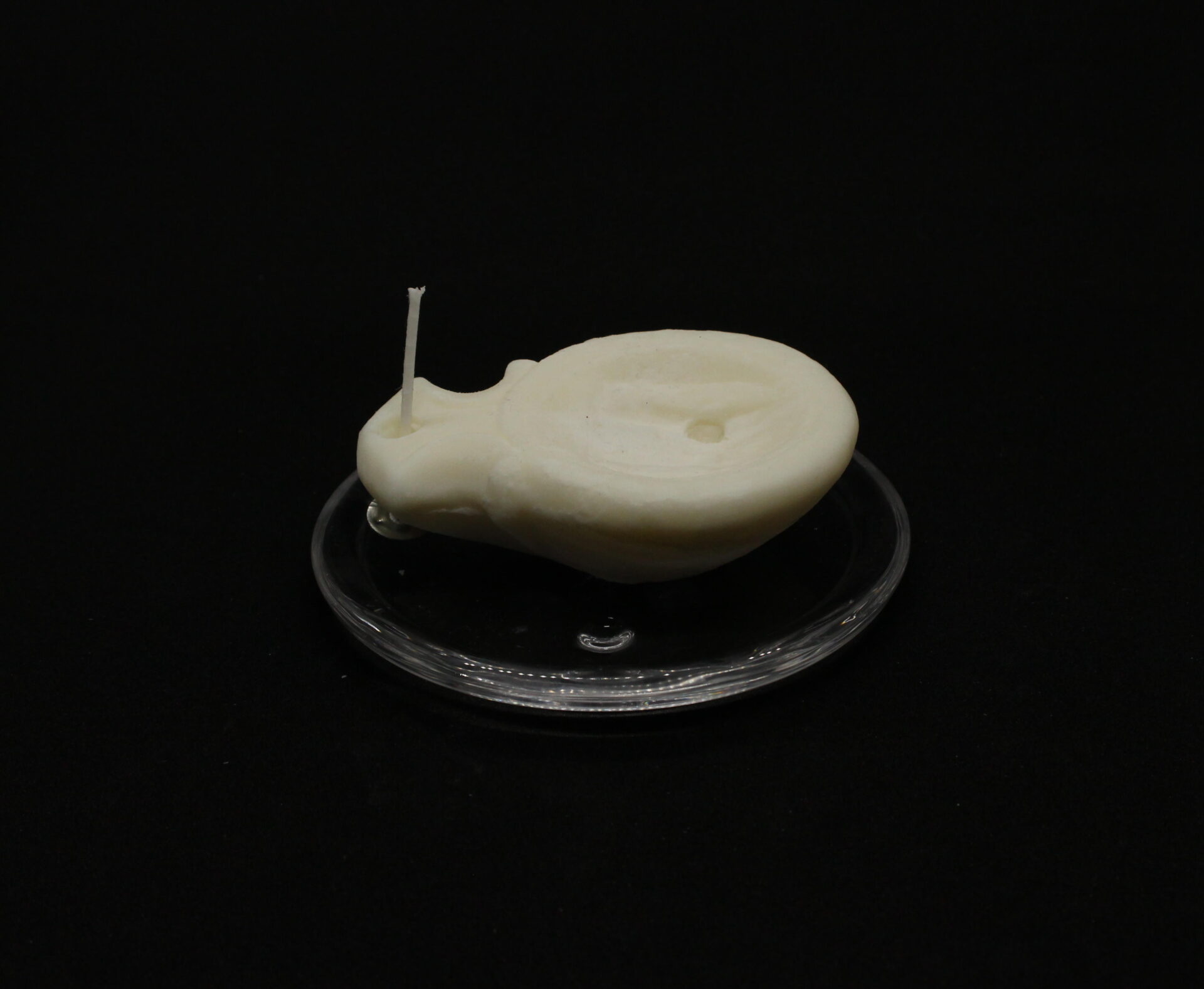


For the oil lamps, I used five existing 3D models from Global Digital Heritage. The original models were edited so they could be printed by Fluxaxis in two halves. The main purpose for this was so I could insert a flickering LED into each print to resemble the function of a traditional lamp but in a reinvented way. The horizontal cutting method is also typical of how the lamps would have been produced, this was accidental but adds more meaning to the final artwork. I then painted the lamps in terracotta and placed them on iron-type holders, that I produced from clay, the material of the original lamp, as seen here.
The lamp with torch imagery was used to create a silicone mould so it could be cast in beeswax and soy wax to make candles. Using new technology with old imagery and forms shows a progression and a shifting purpose. Going from candle to oil lamp to LED reveals this history of change and the various sources of light.
Beads
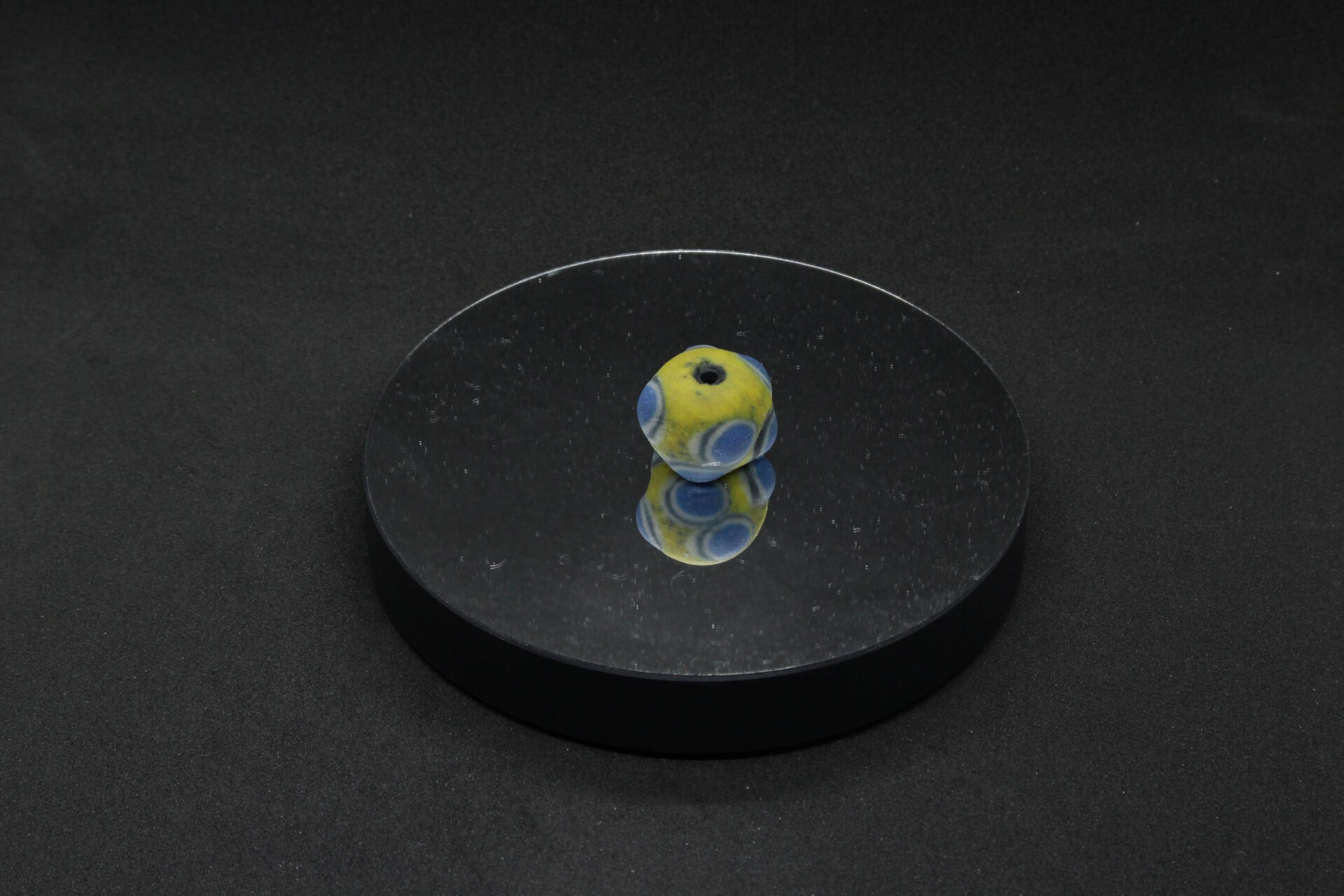

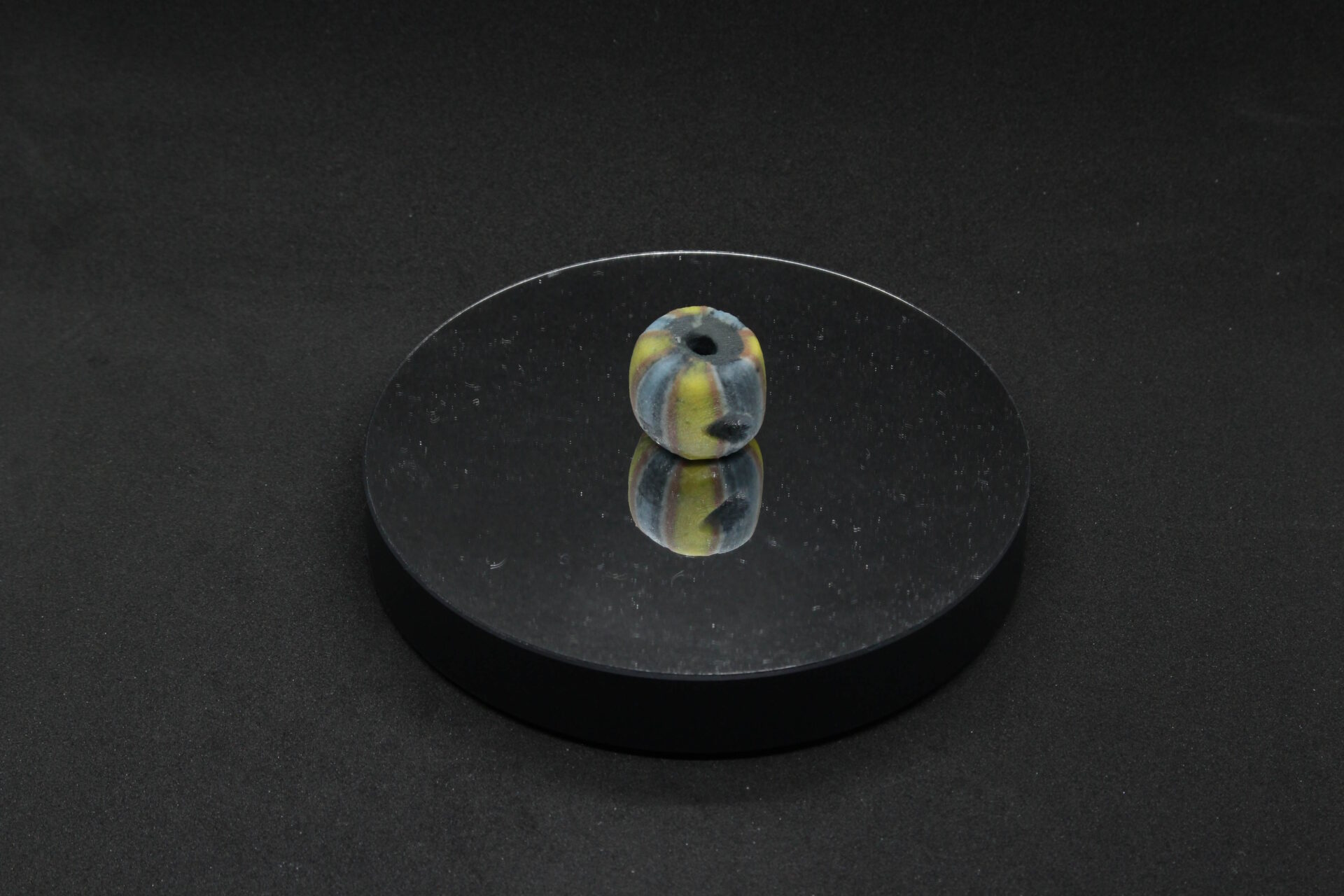

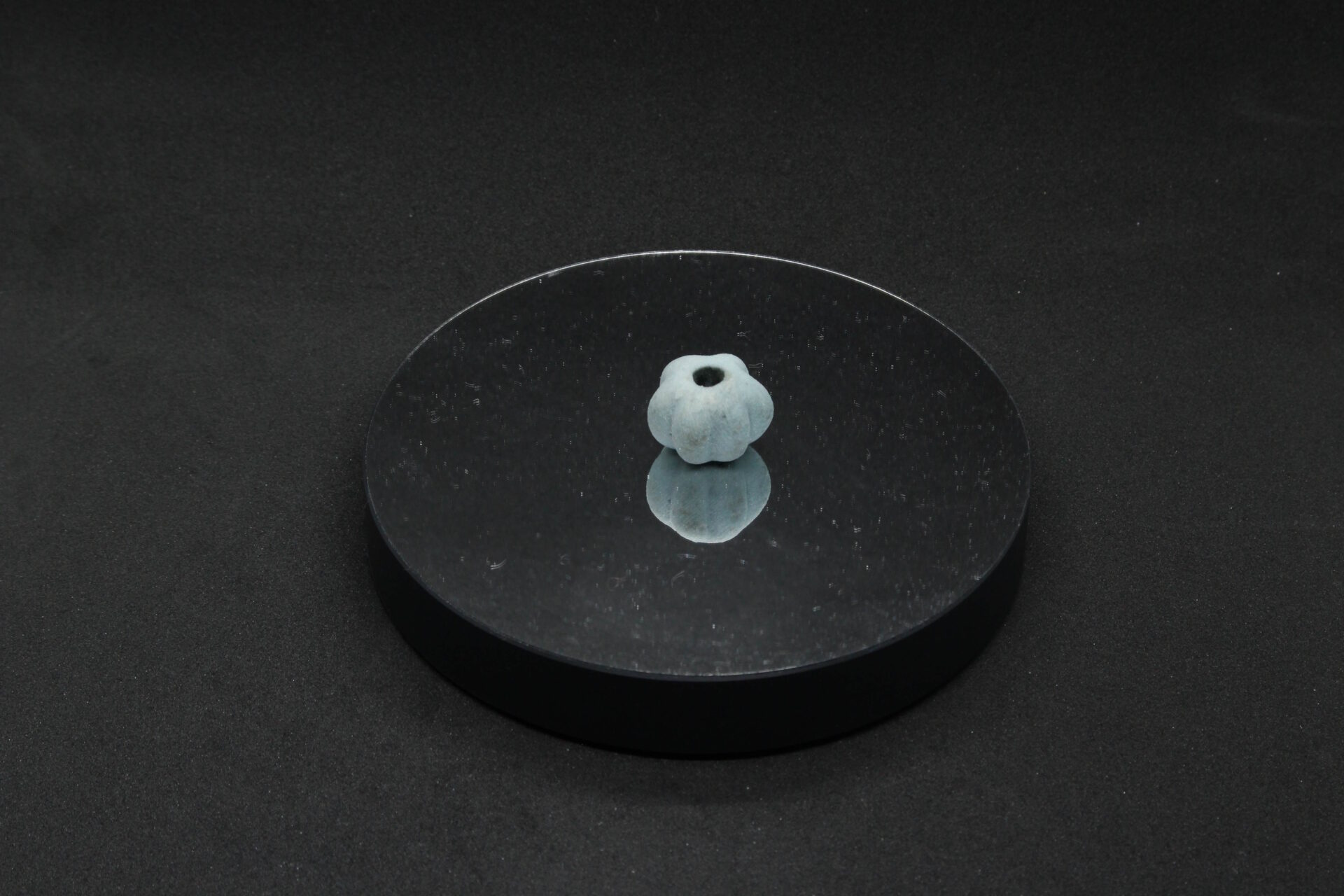

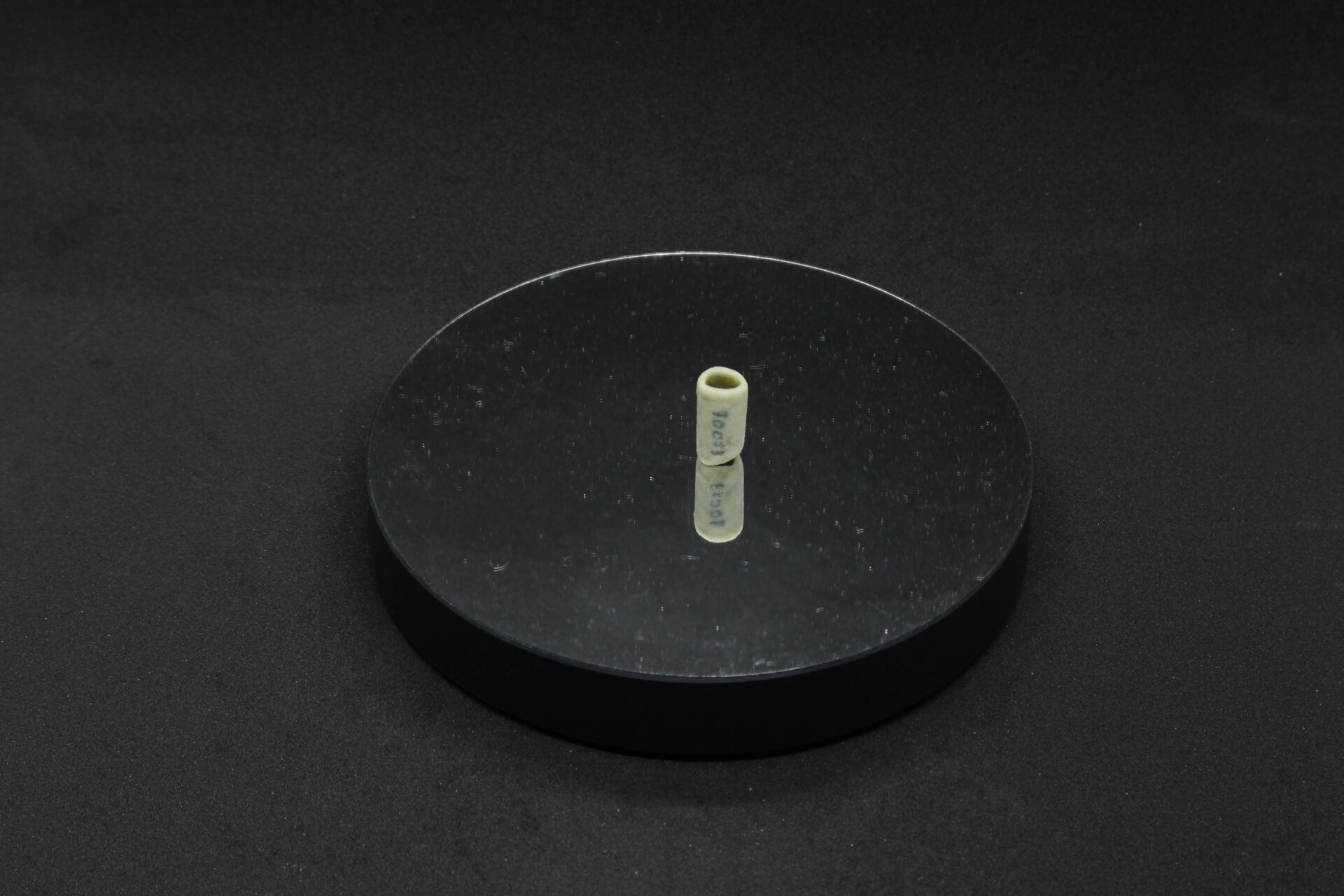
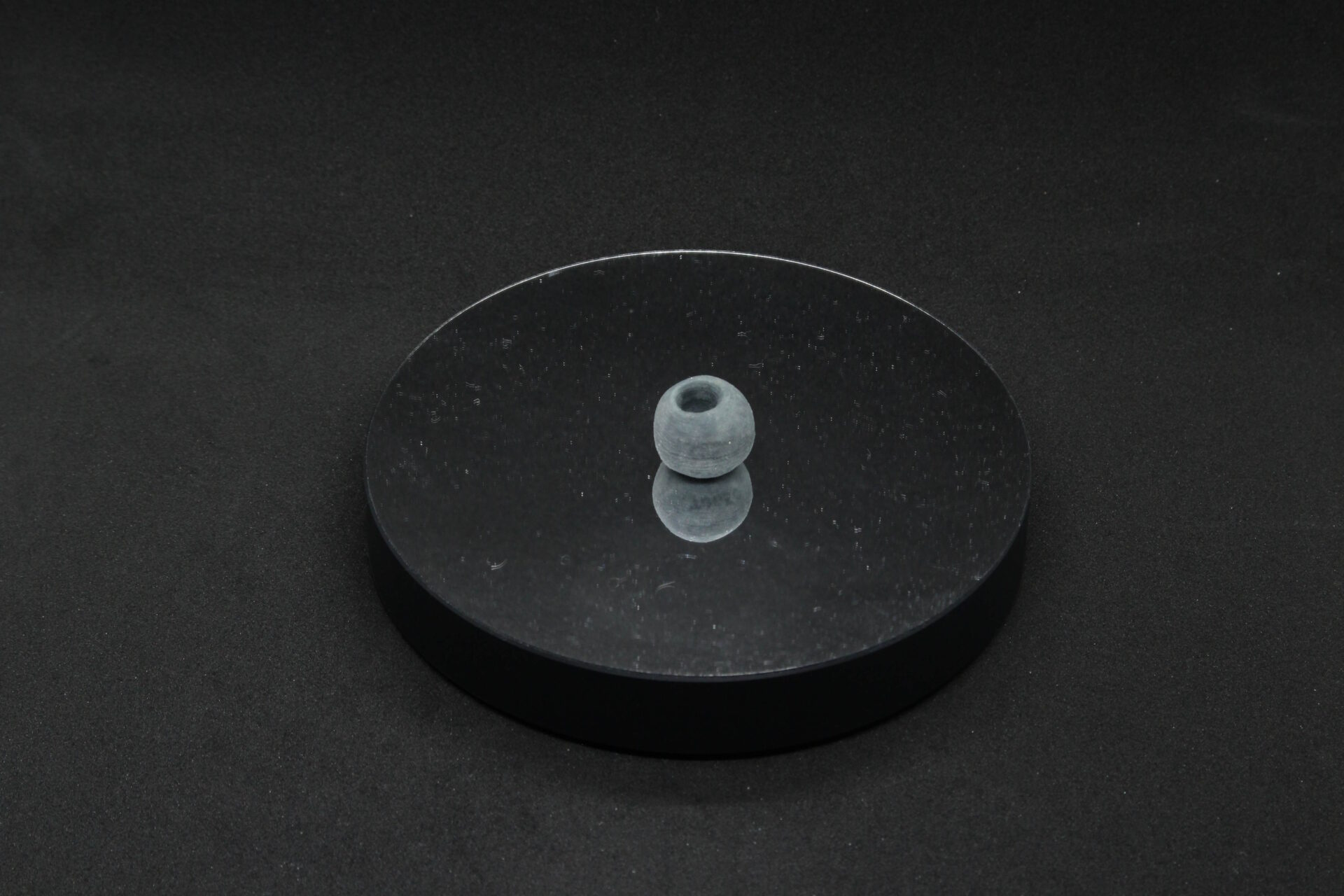





The original material of some of the beads is stone and glass. The dozen or so beads are from Åland Museum and Global Digital Heritage. I either 3D printed the beads in colour or hand-painted them. A good portion of the beads is thought to have been used to make necklaces. To convey this, I hollowed certain 3D models and manipulated the sizes so I could use a cord to present them in a way that reveals their function to the viewer.
Flooring
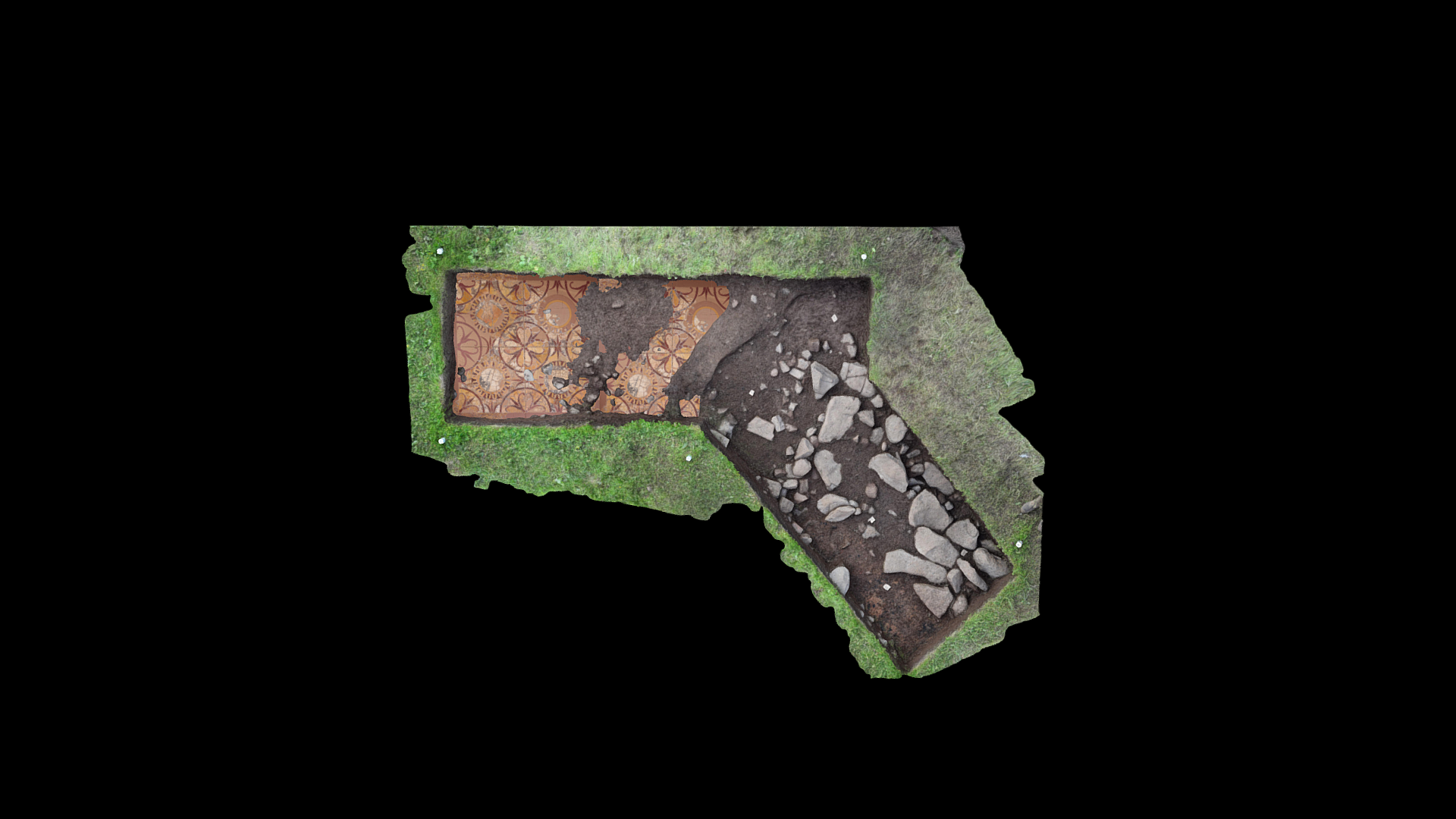

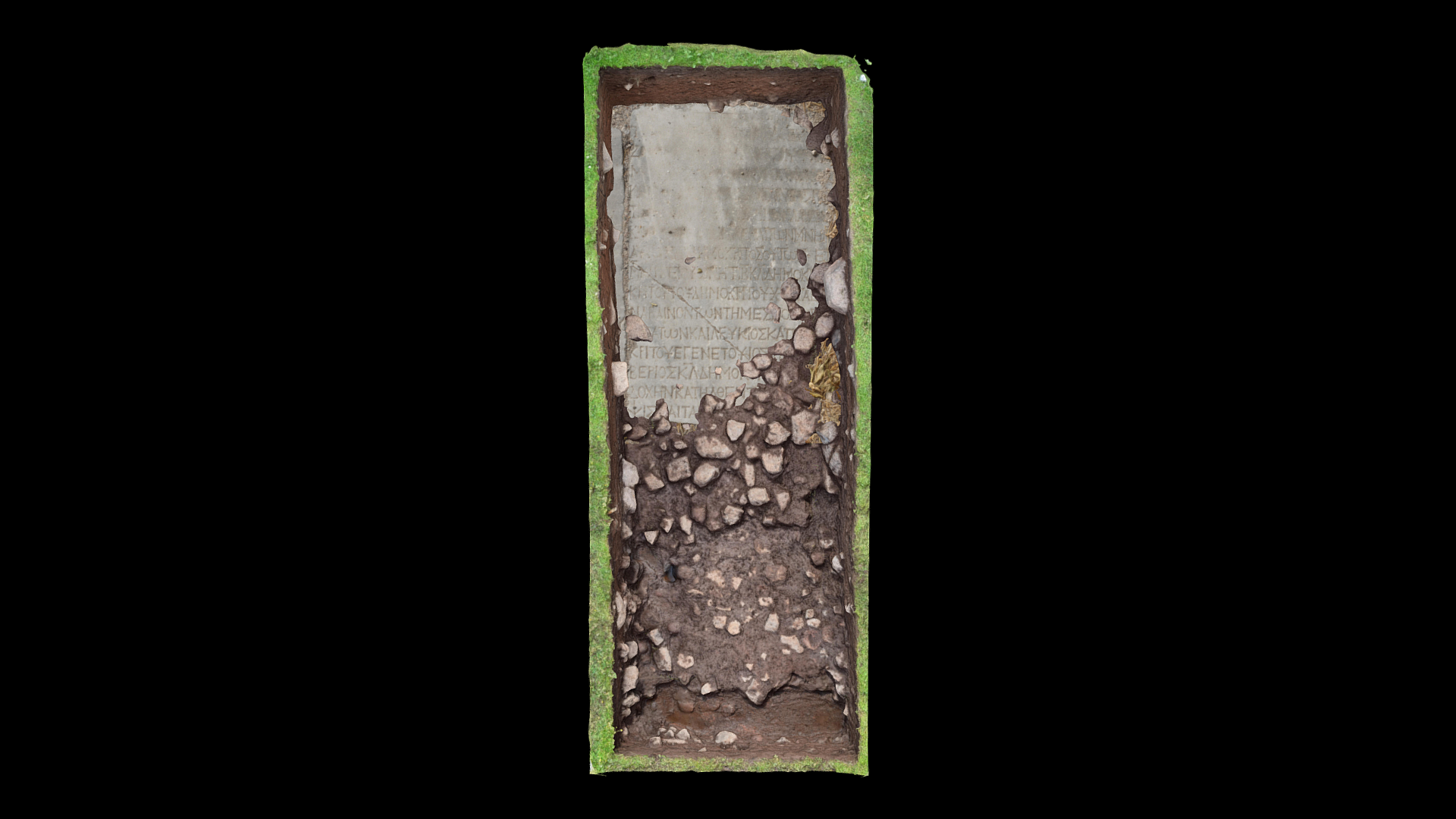
The flooring group consists of one or more remixed 3D models that combine mosaics, tiles, and excavation imagery, all sourced from Sketchfab, to highlight what hides beneath the surface. These hybrid models are all from different times and show the potential in 3D and were displayed in digital form only. It features Virtual Archaeology from an object-based approach. The final flooring piece was made up of three newly realised 3D models.
Process and additional

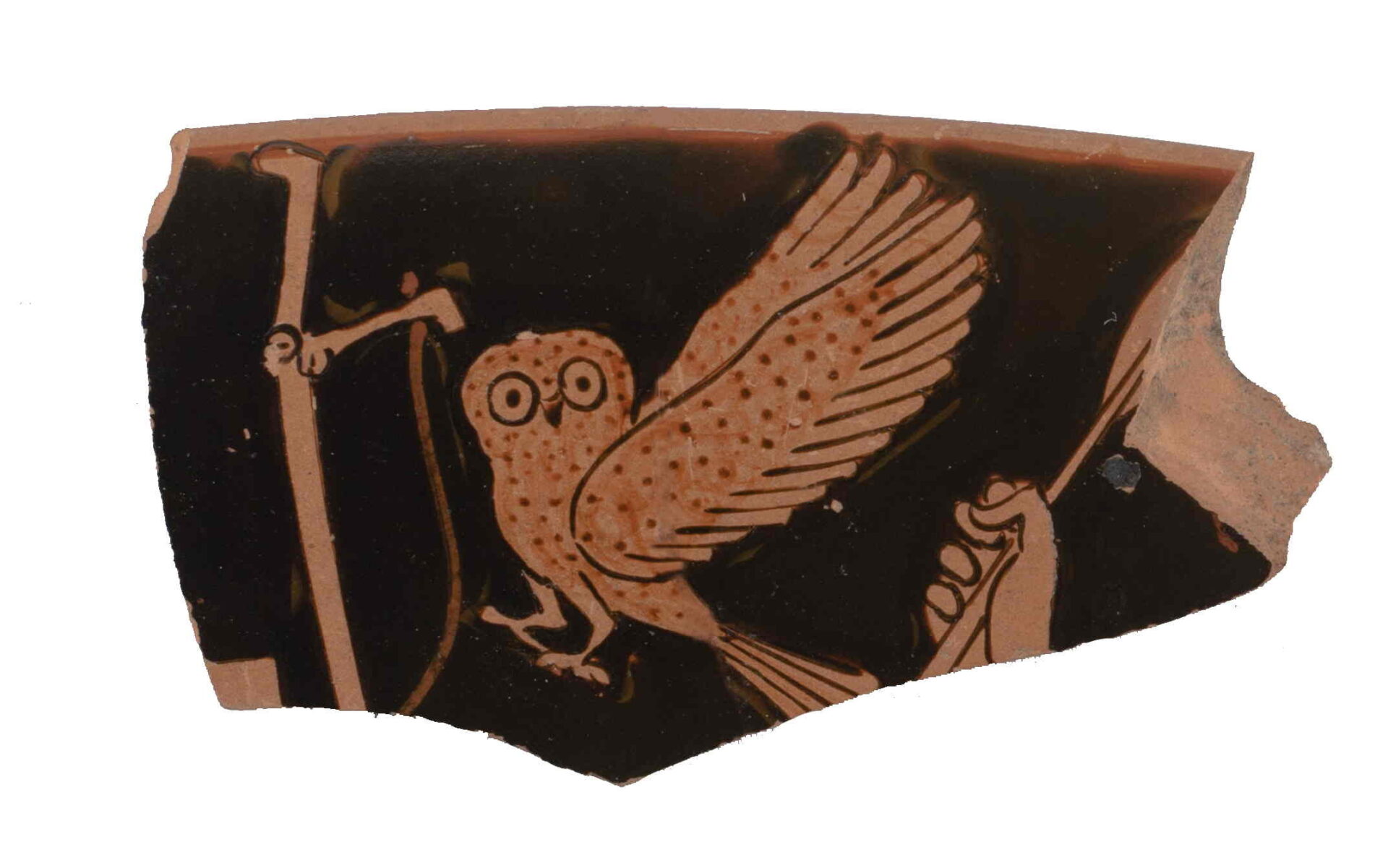
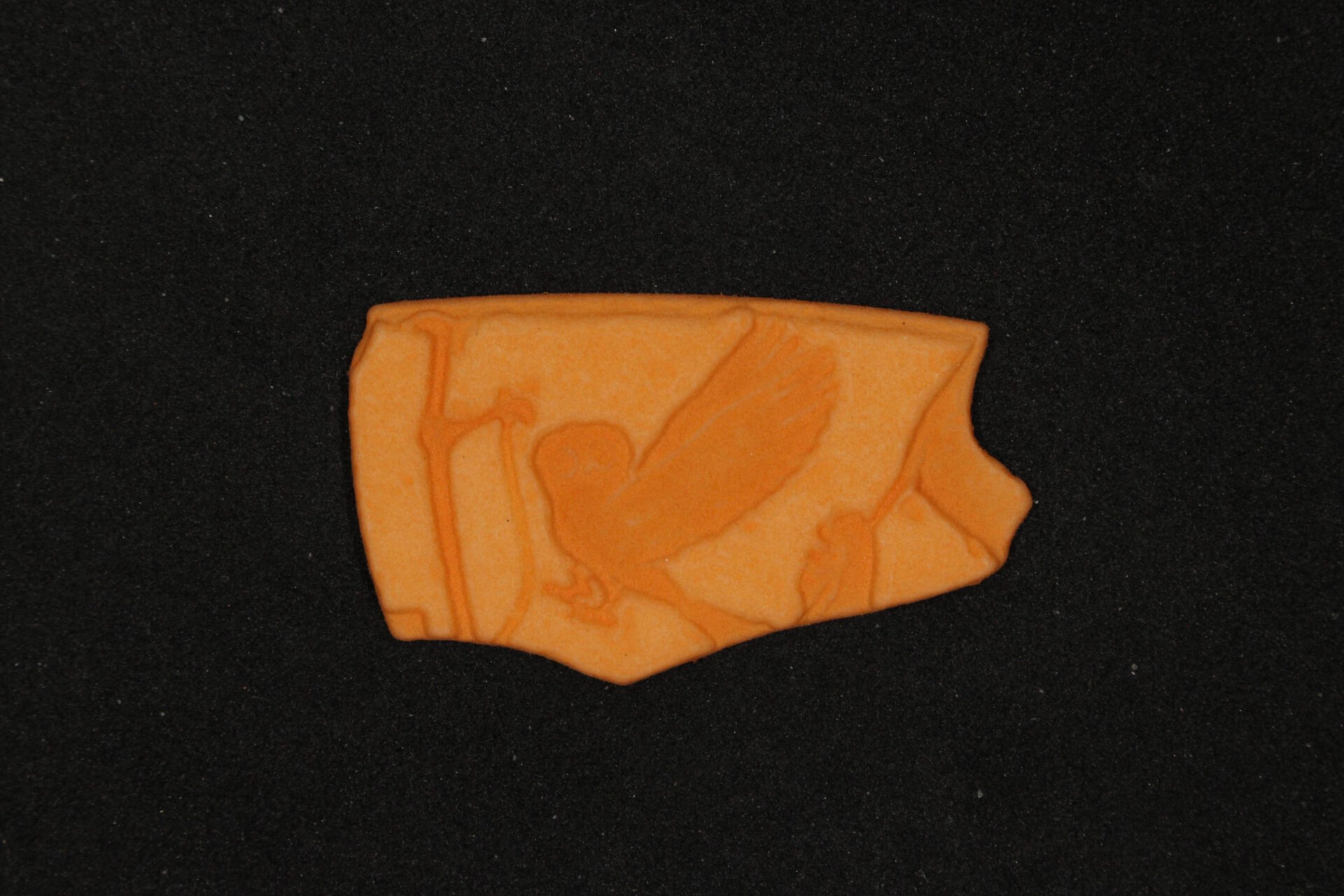

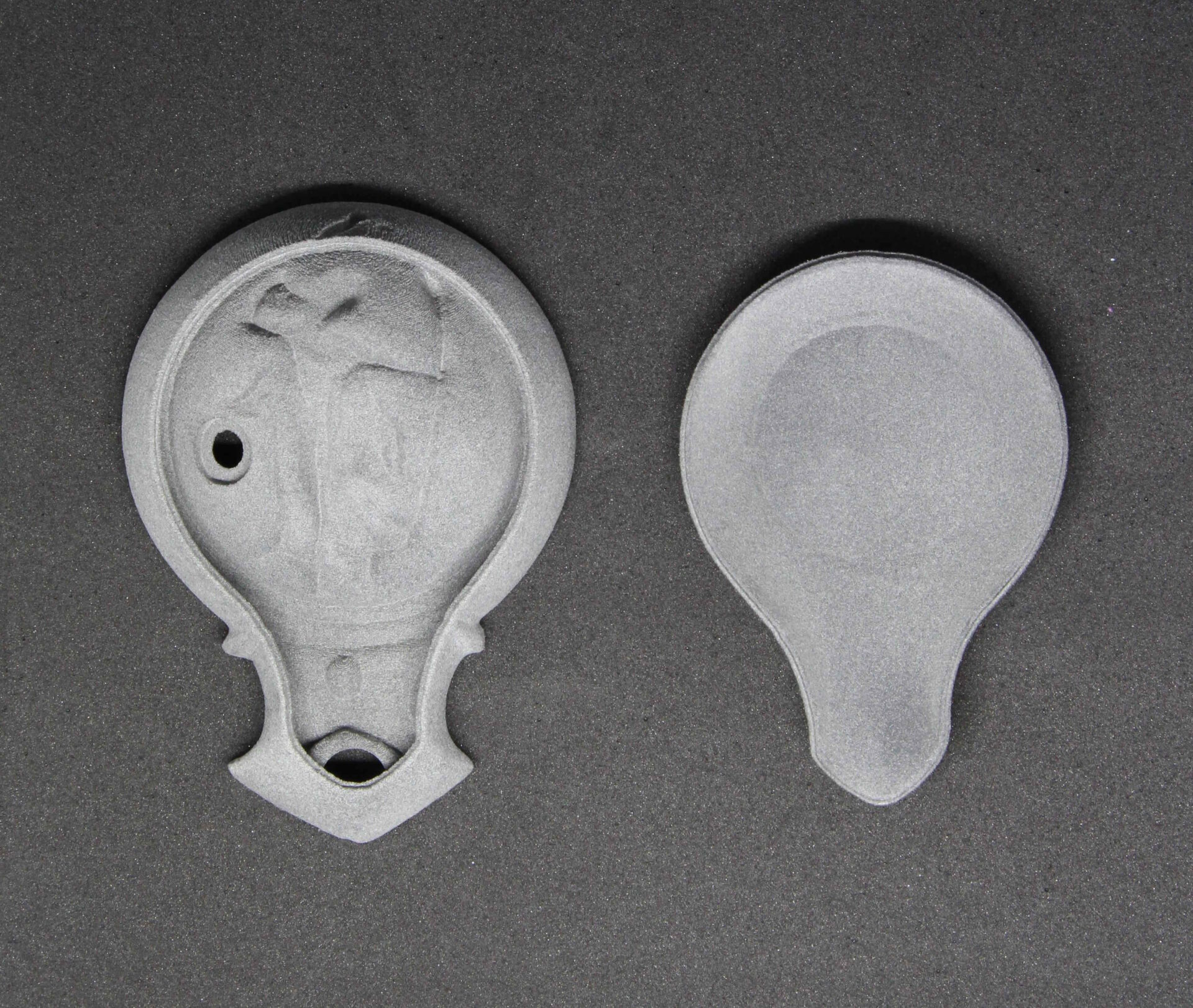

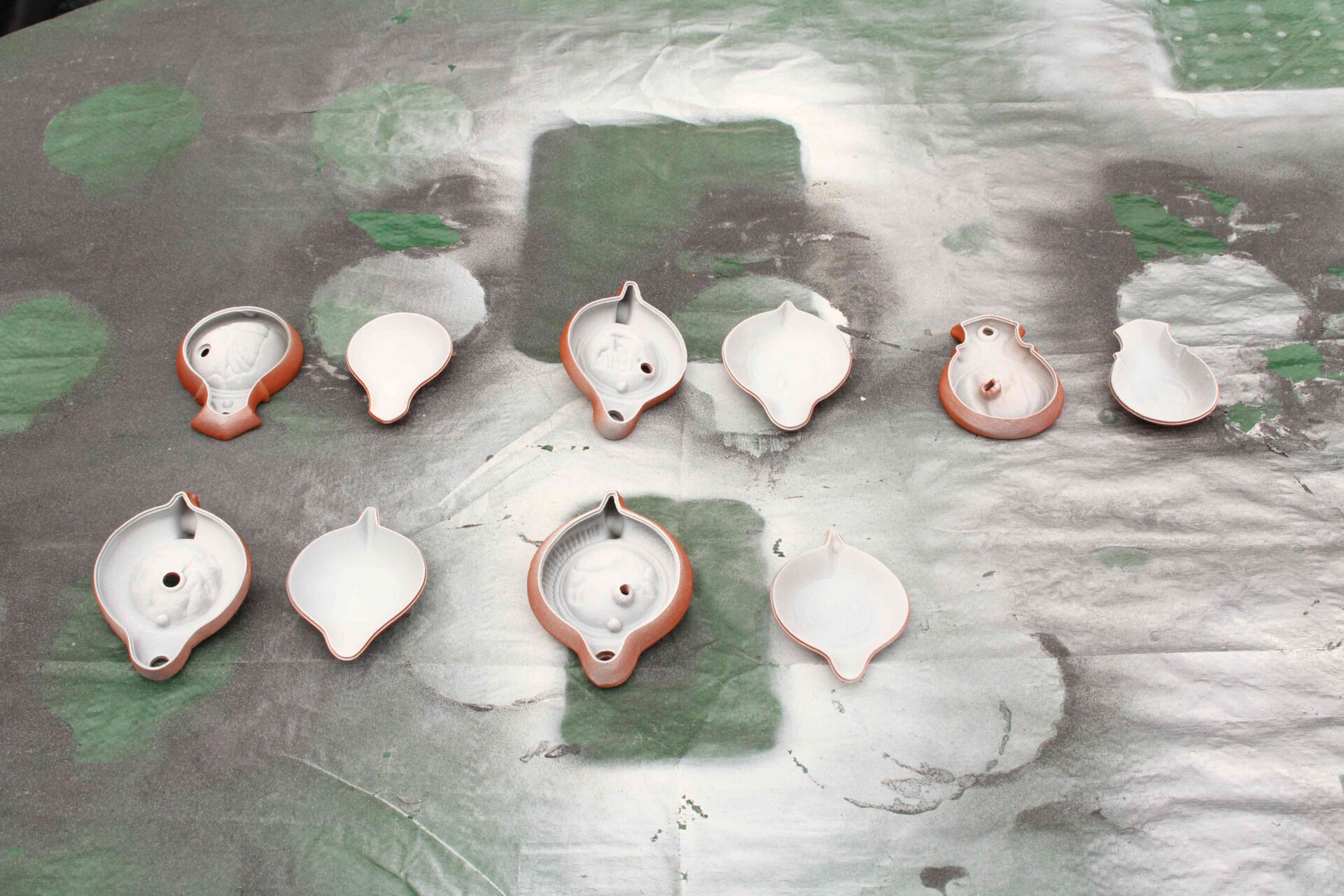
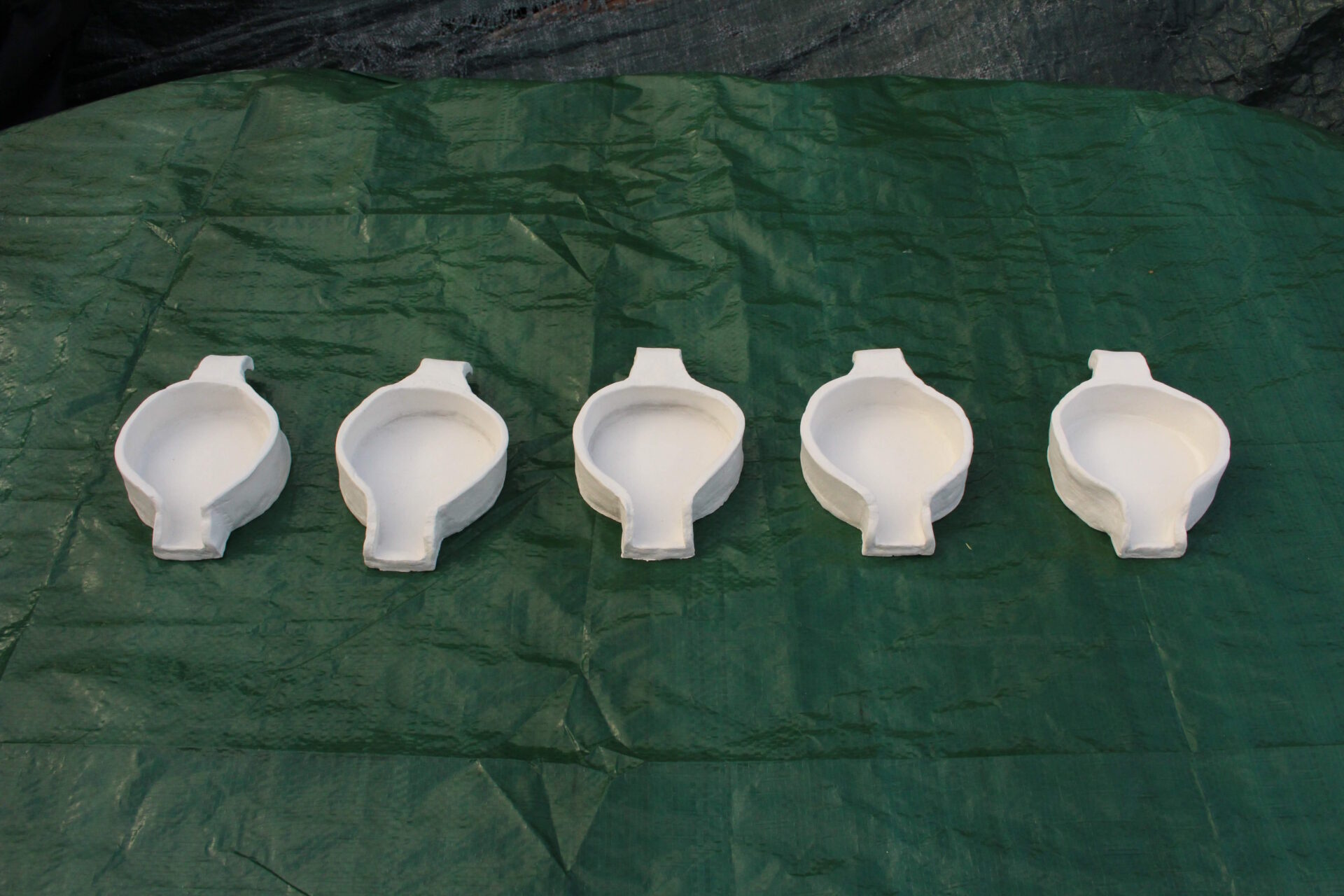
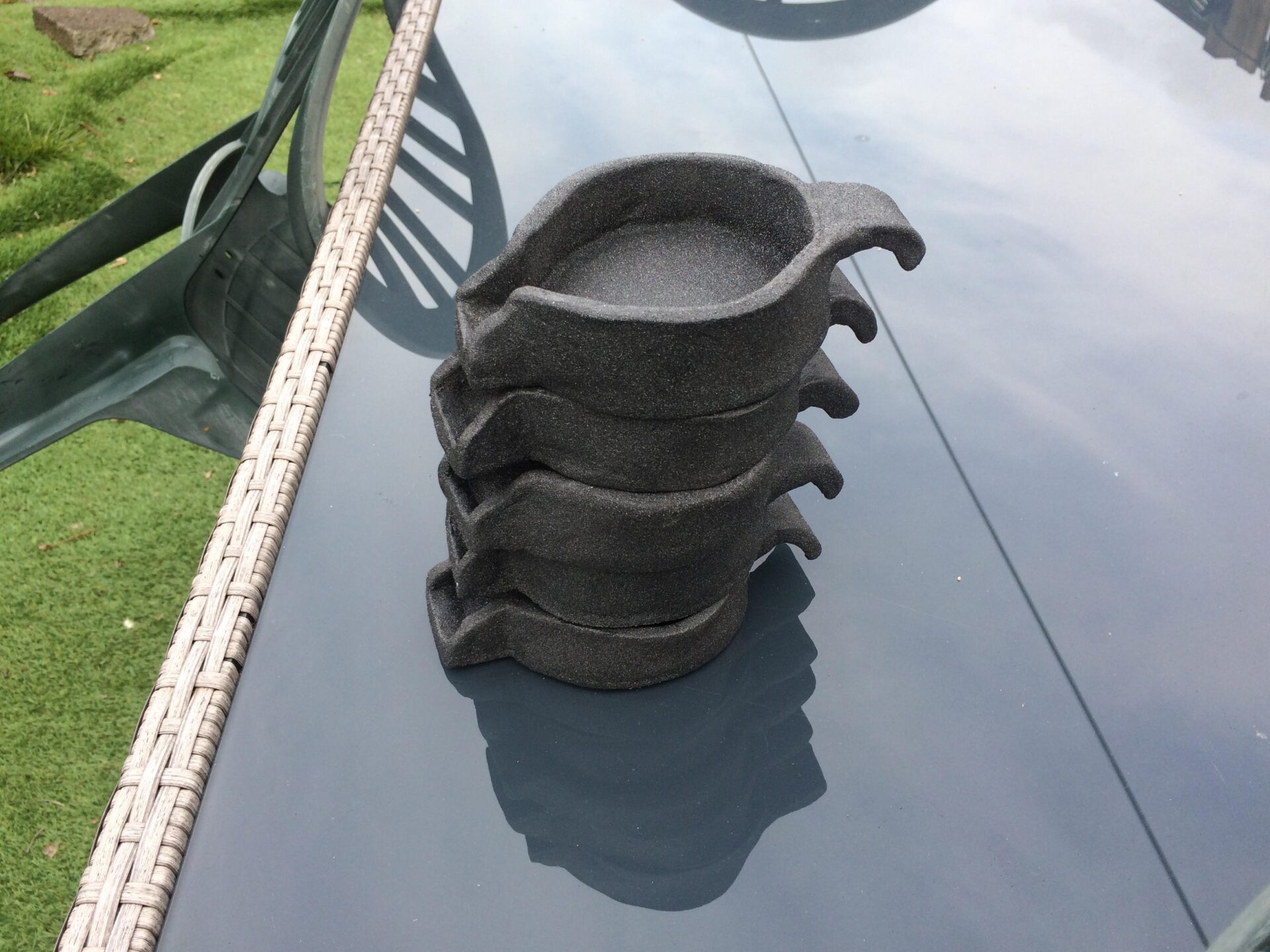

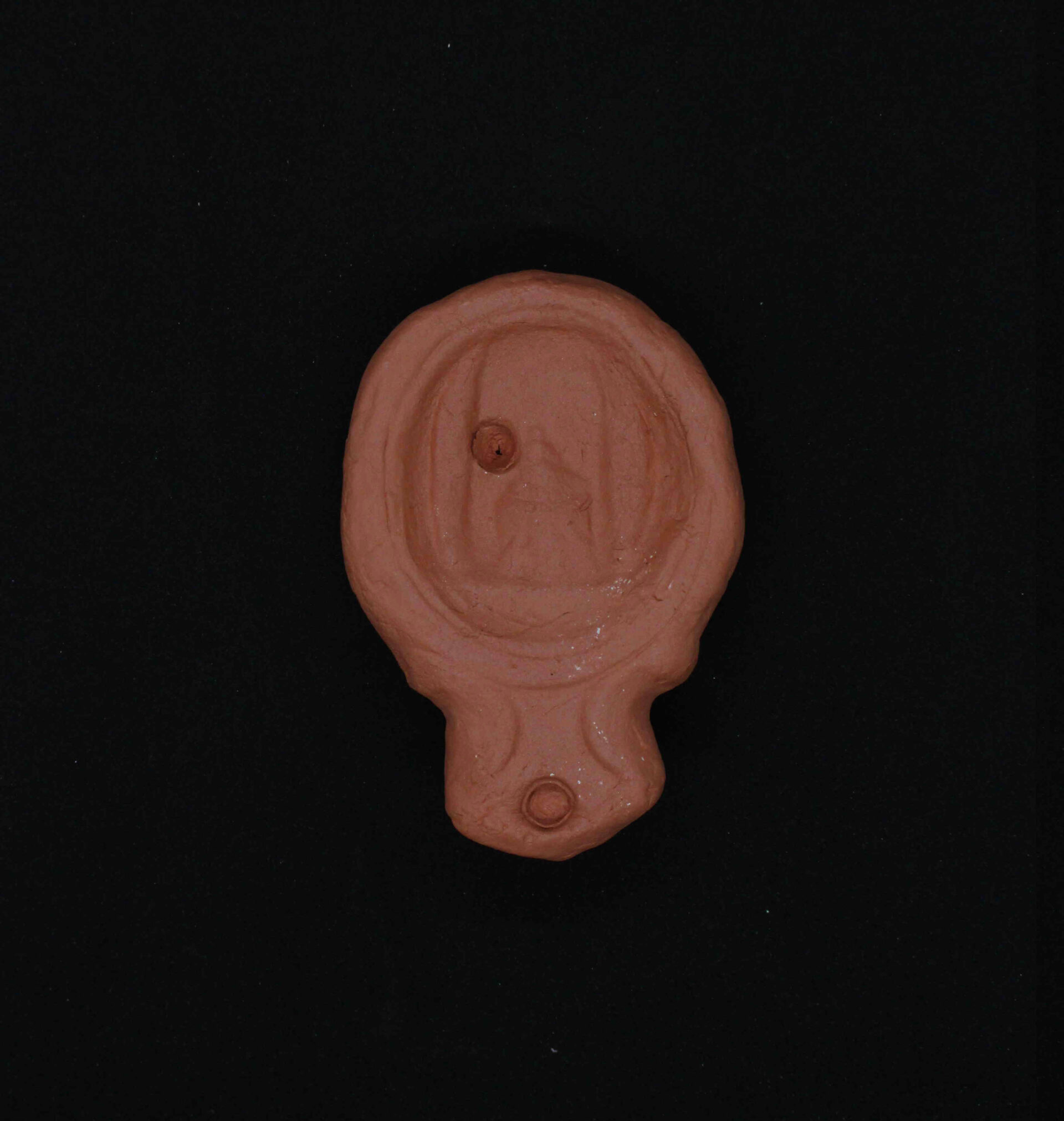
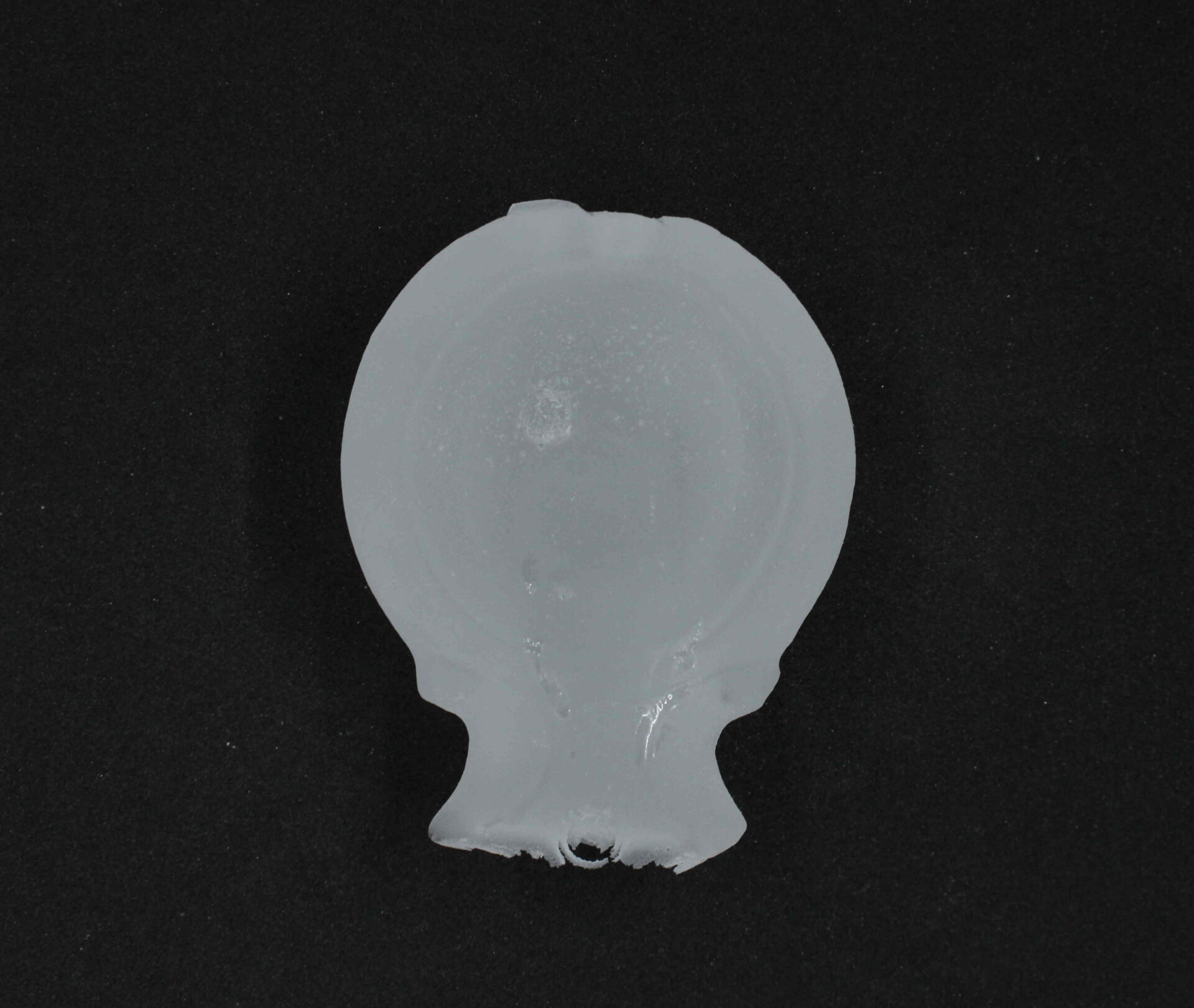
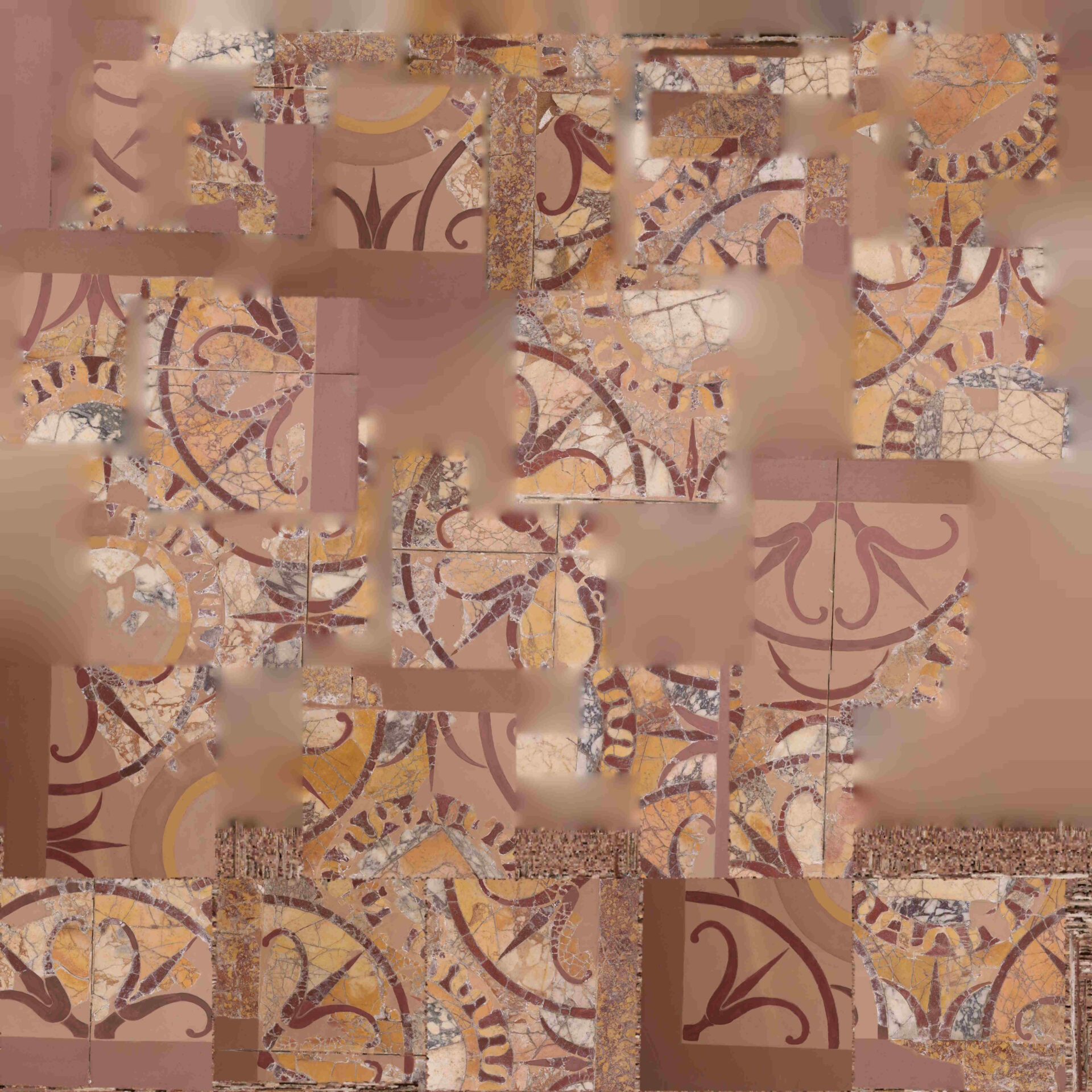

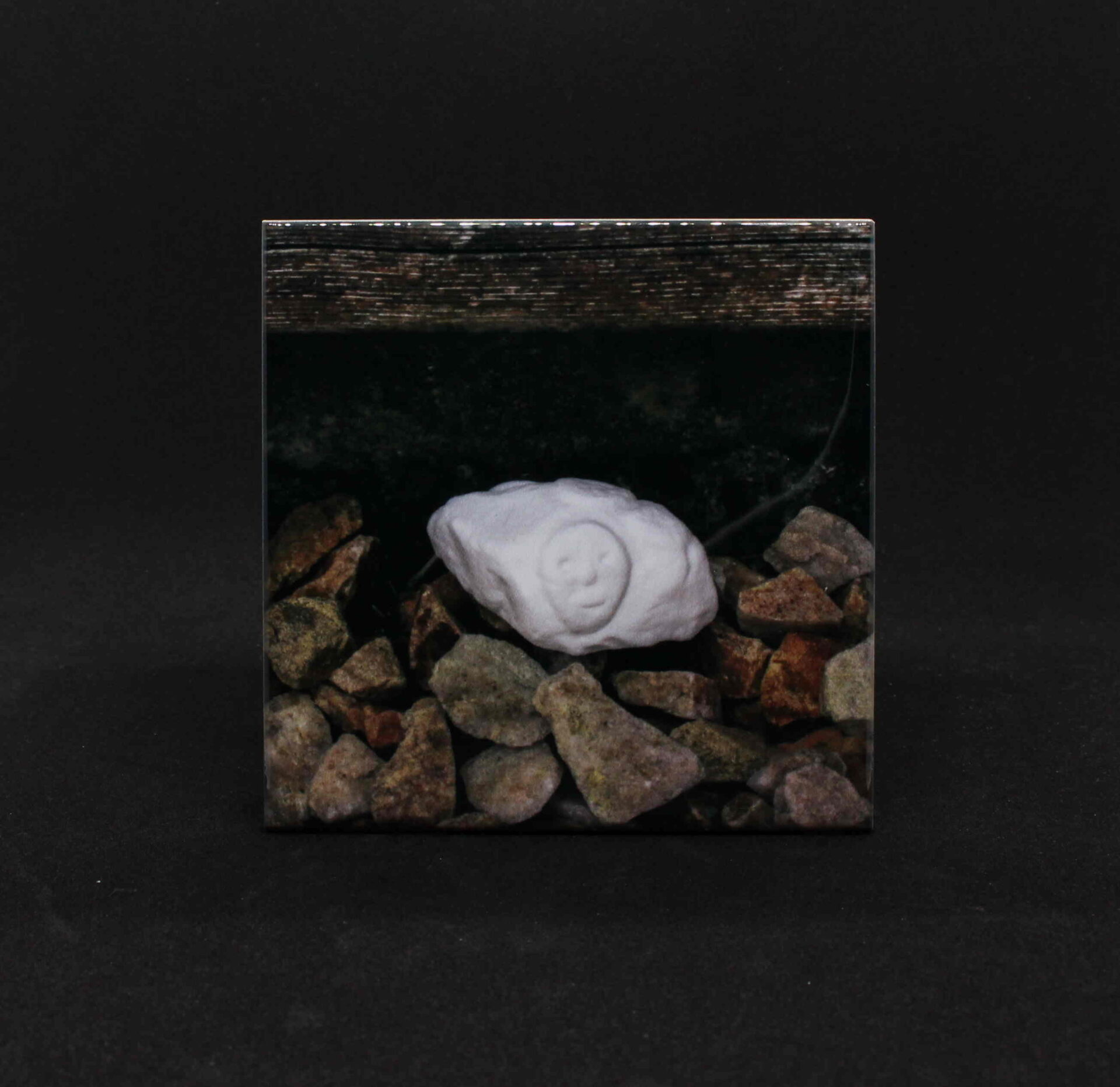
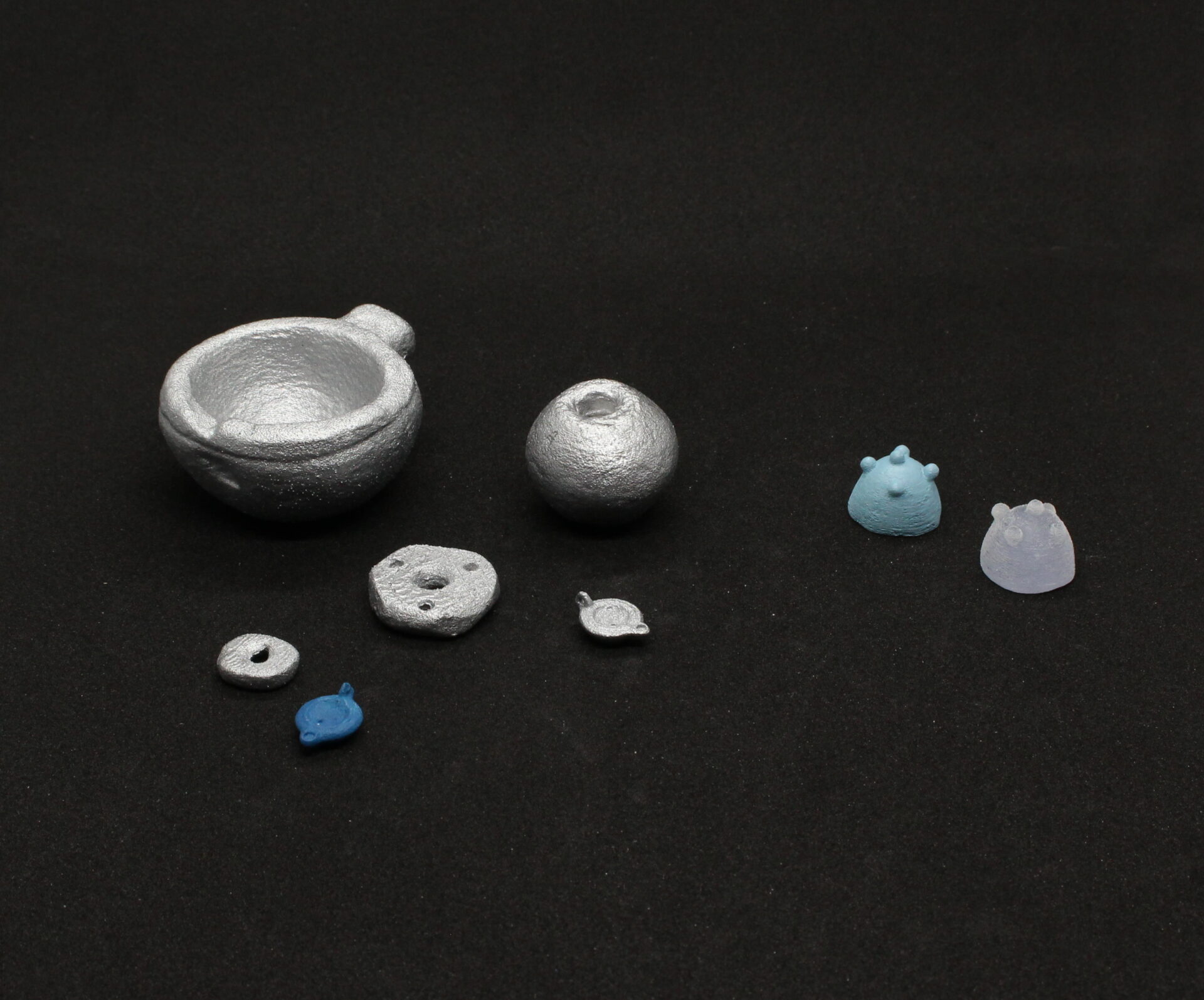

Media
- Oil Lamps, Featured Project, art/archaeology.